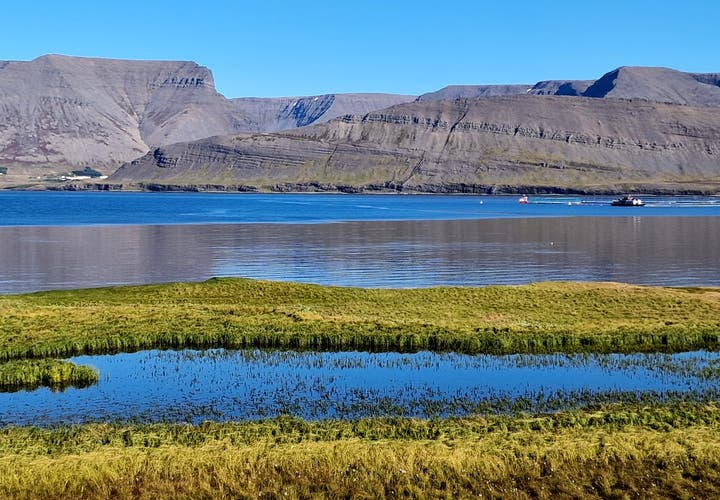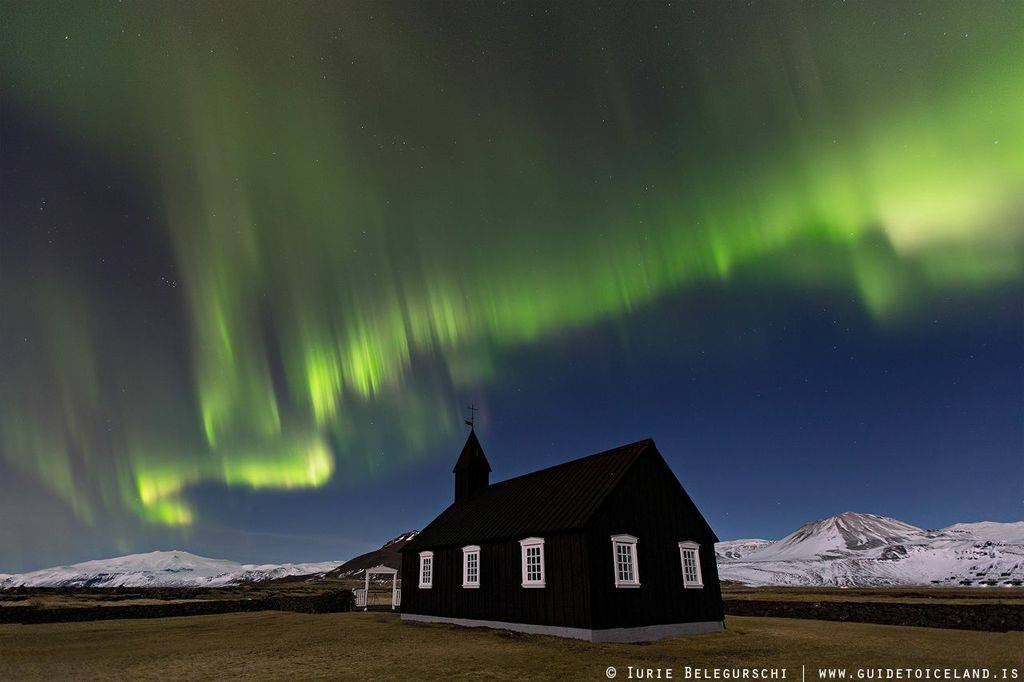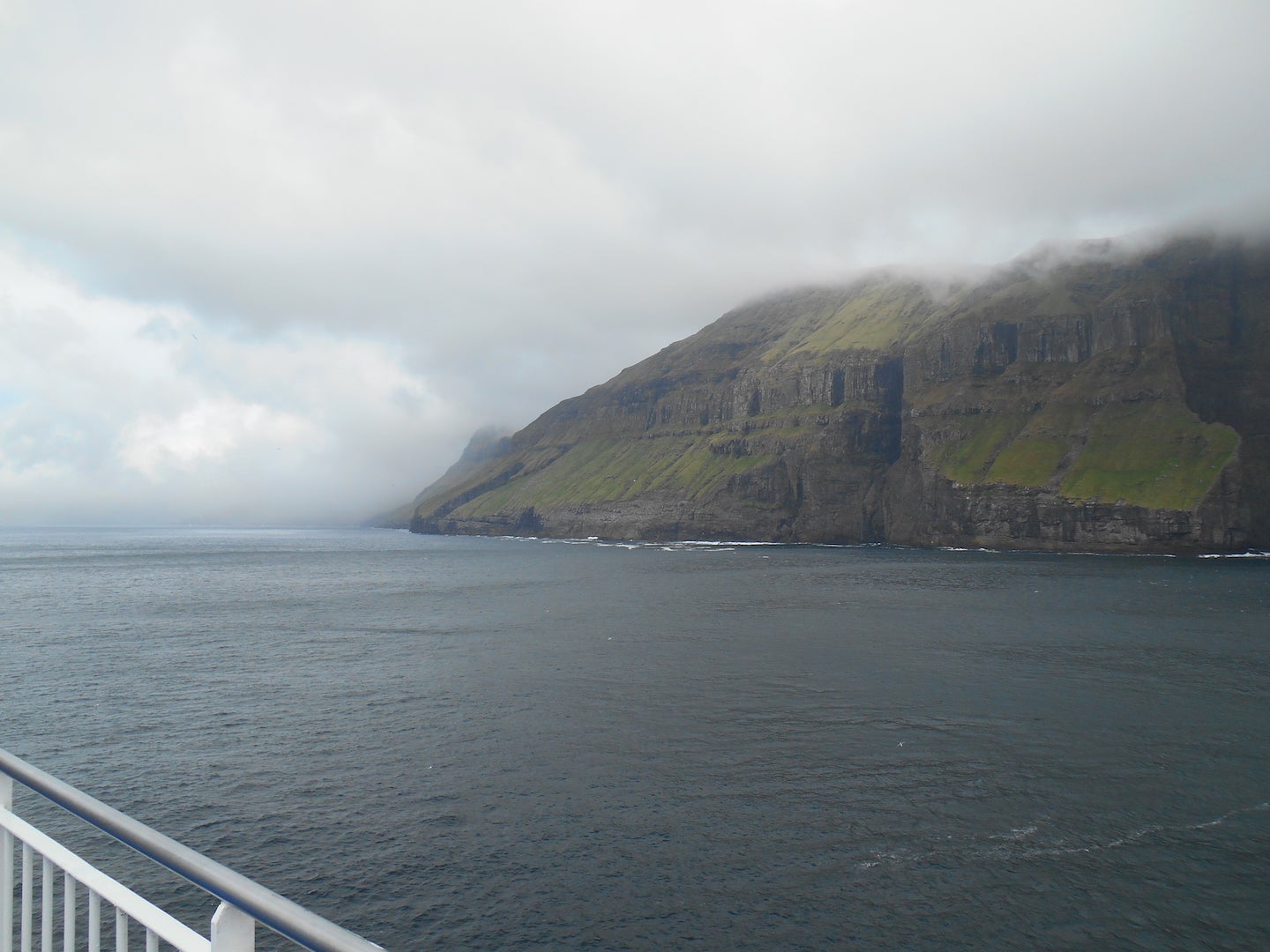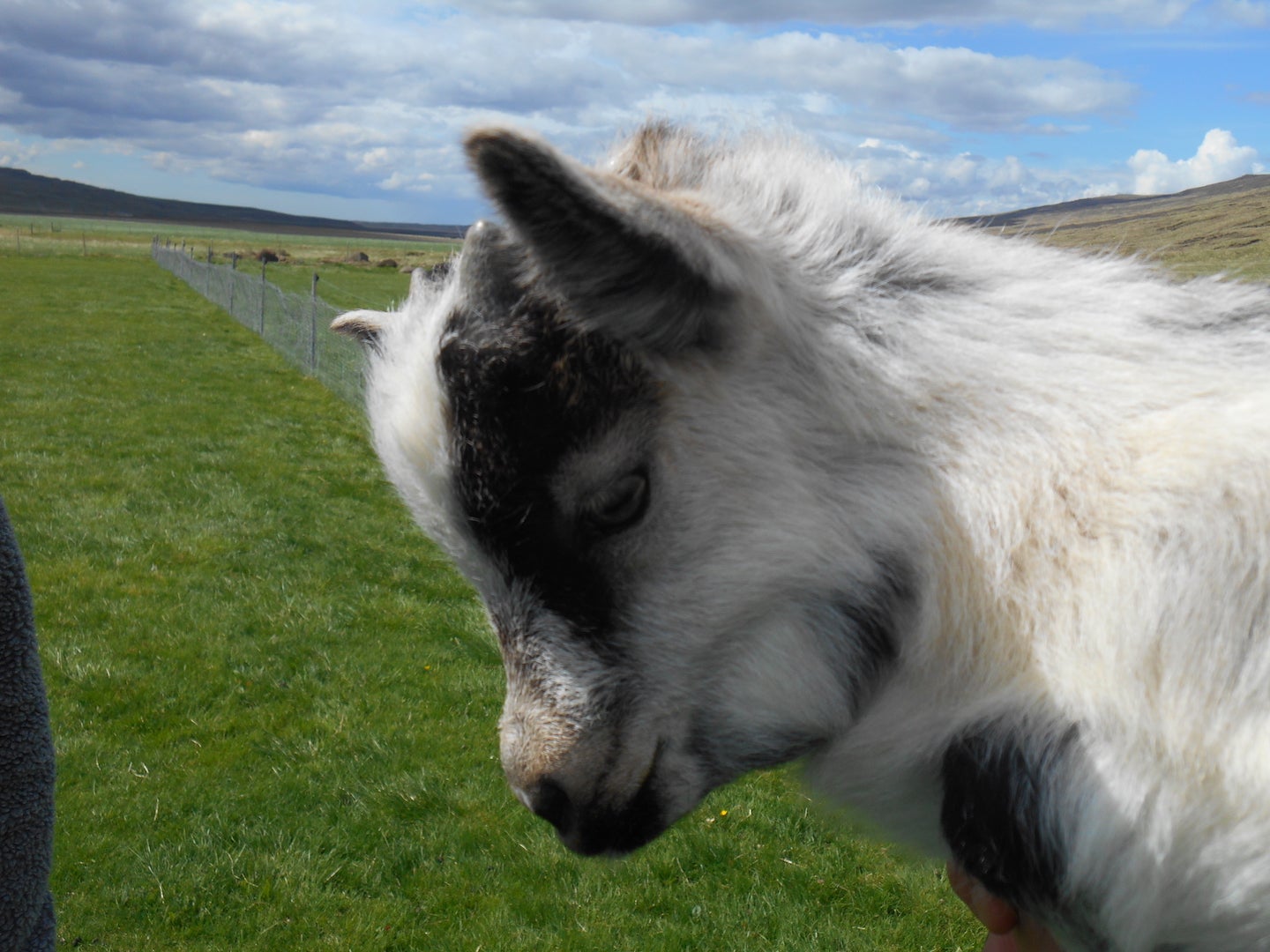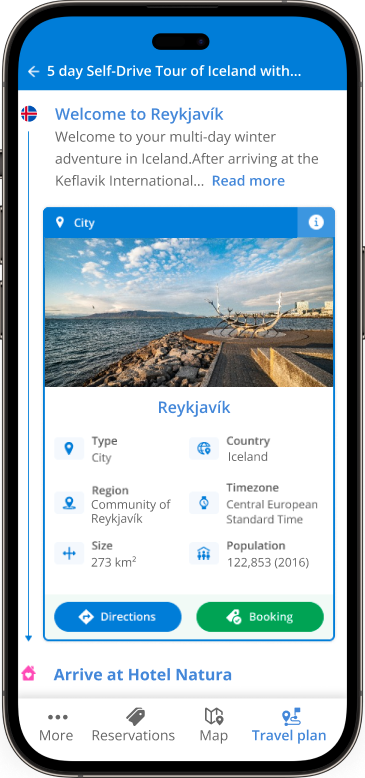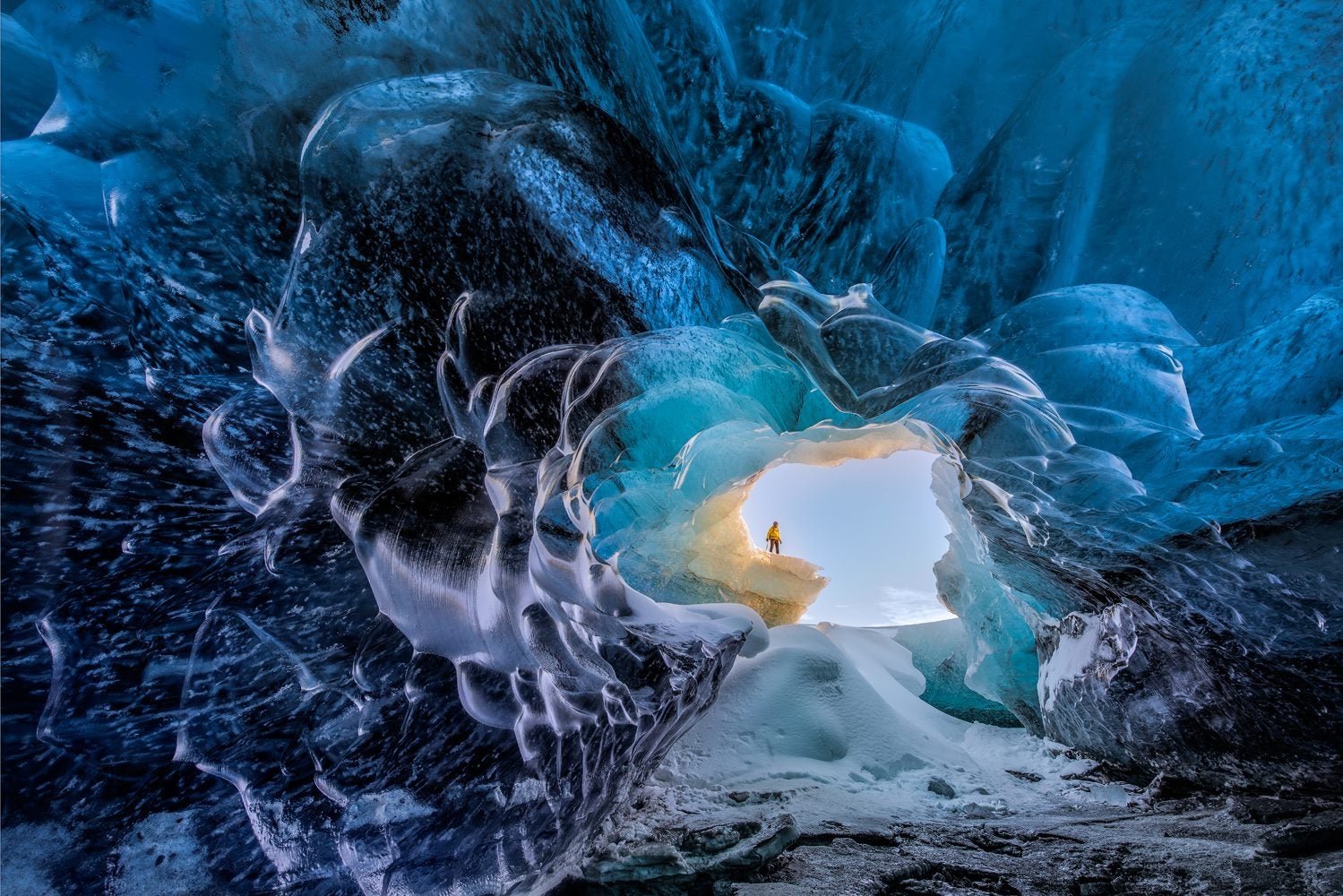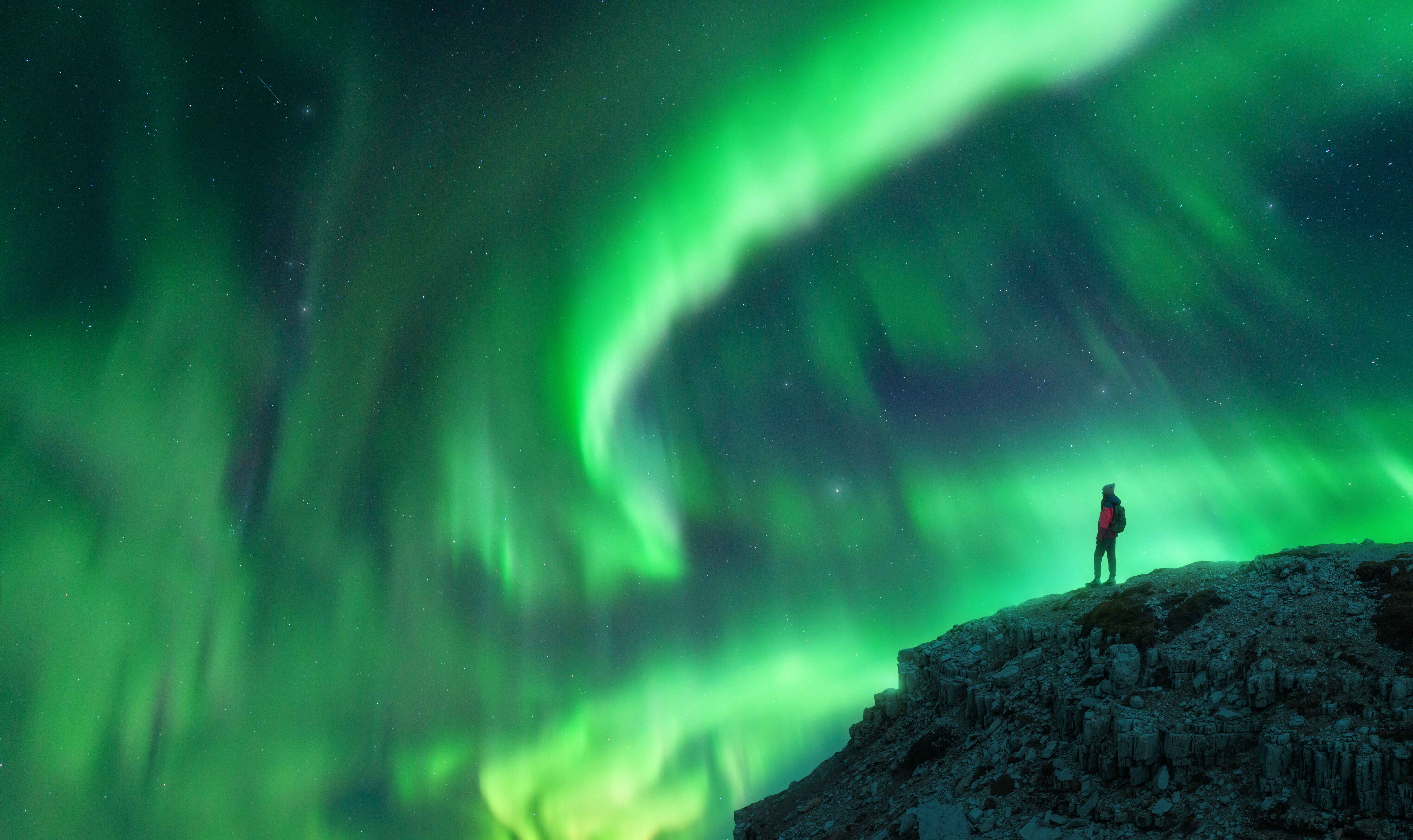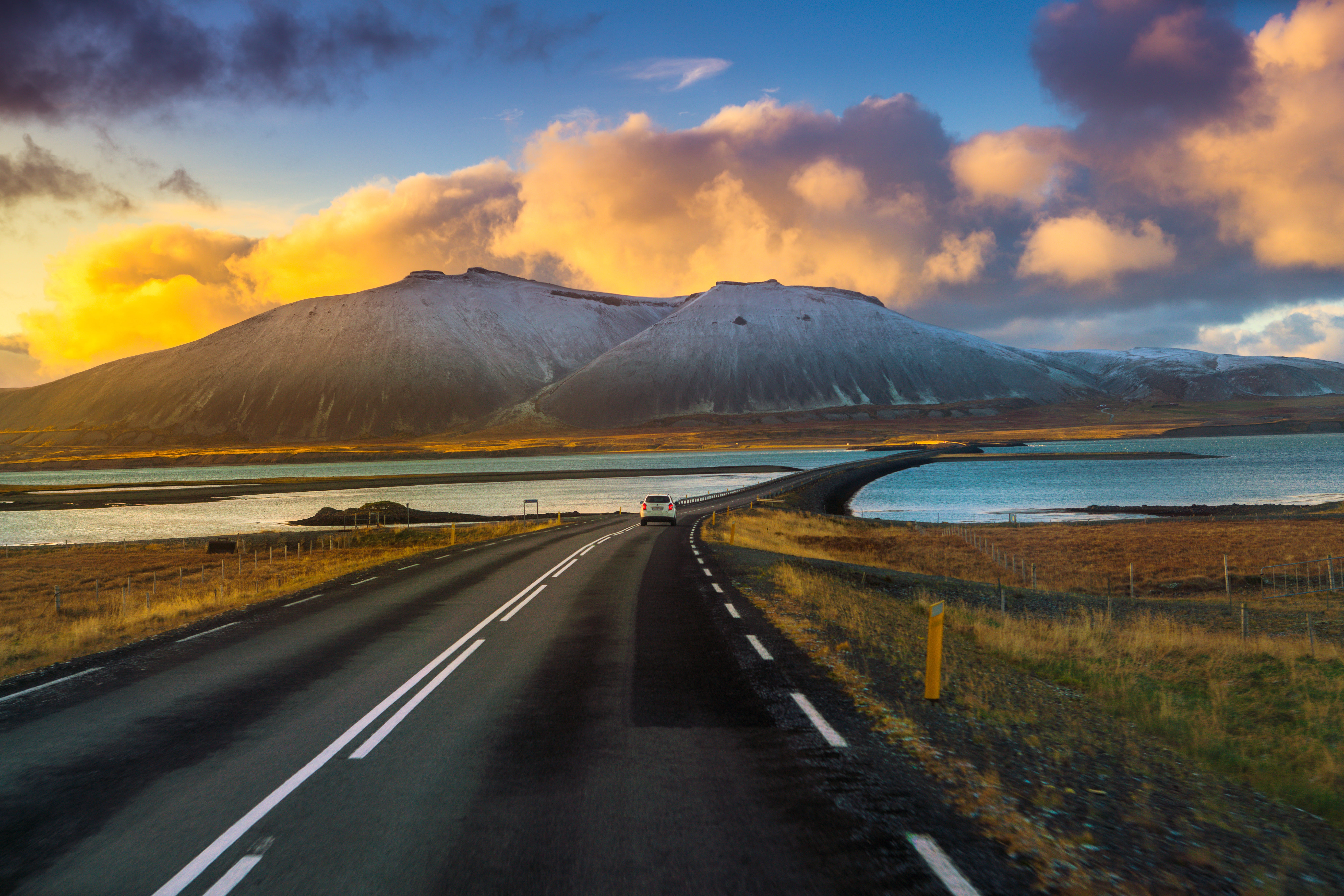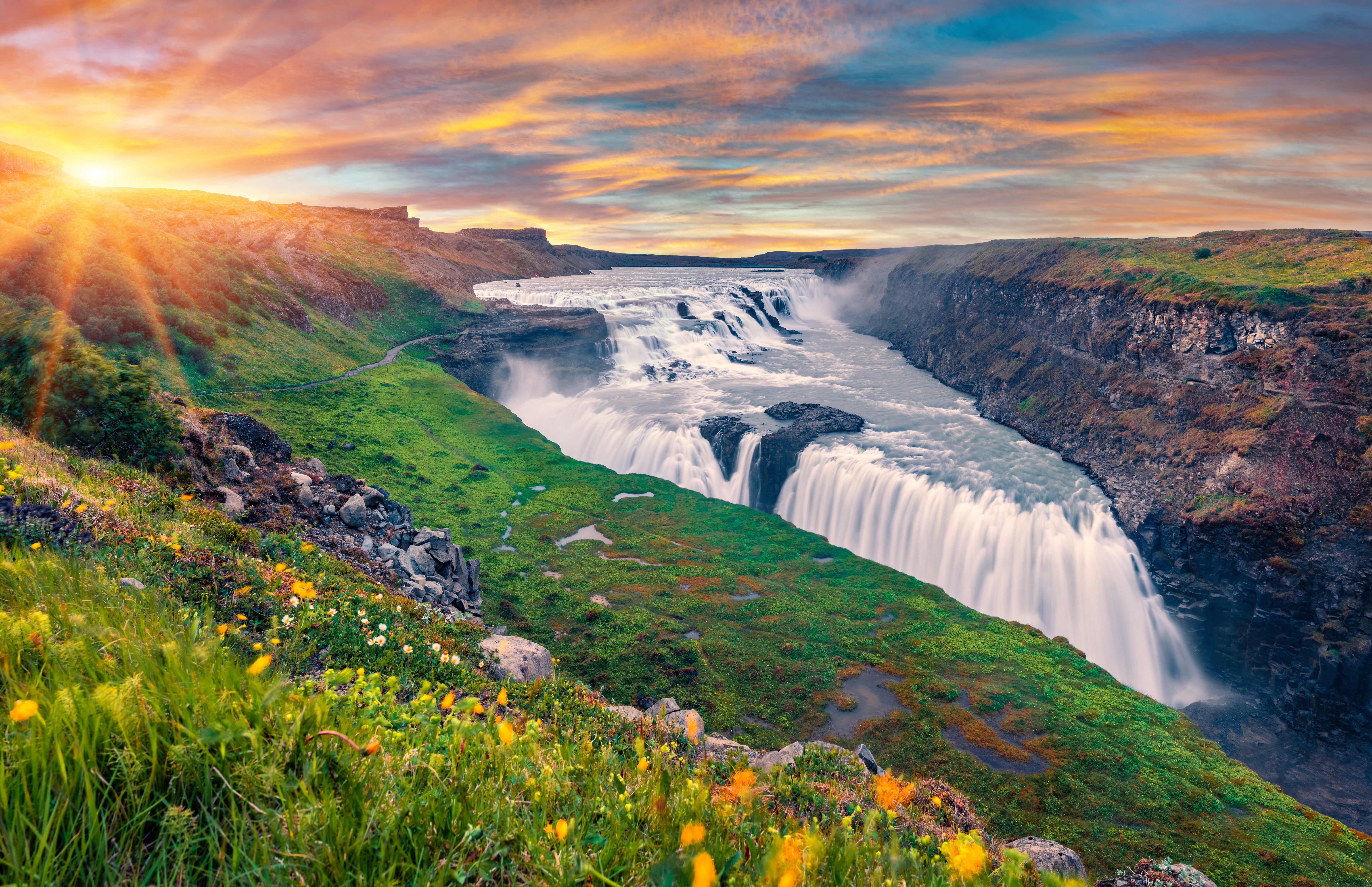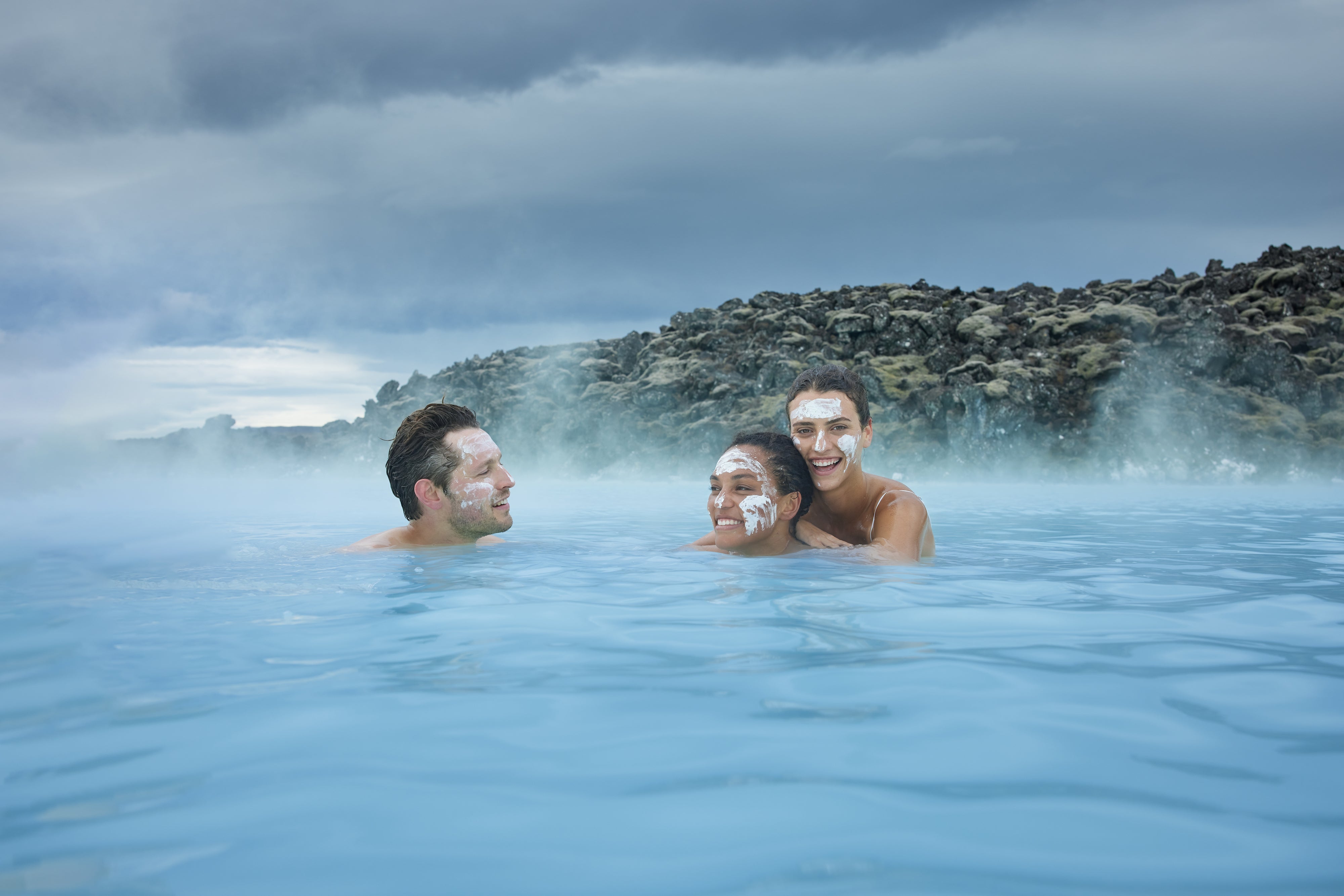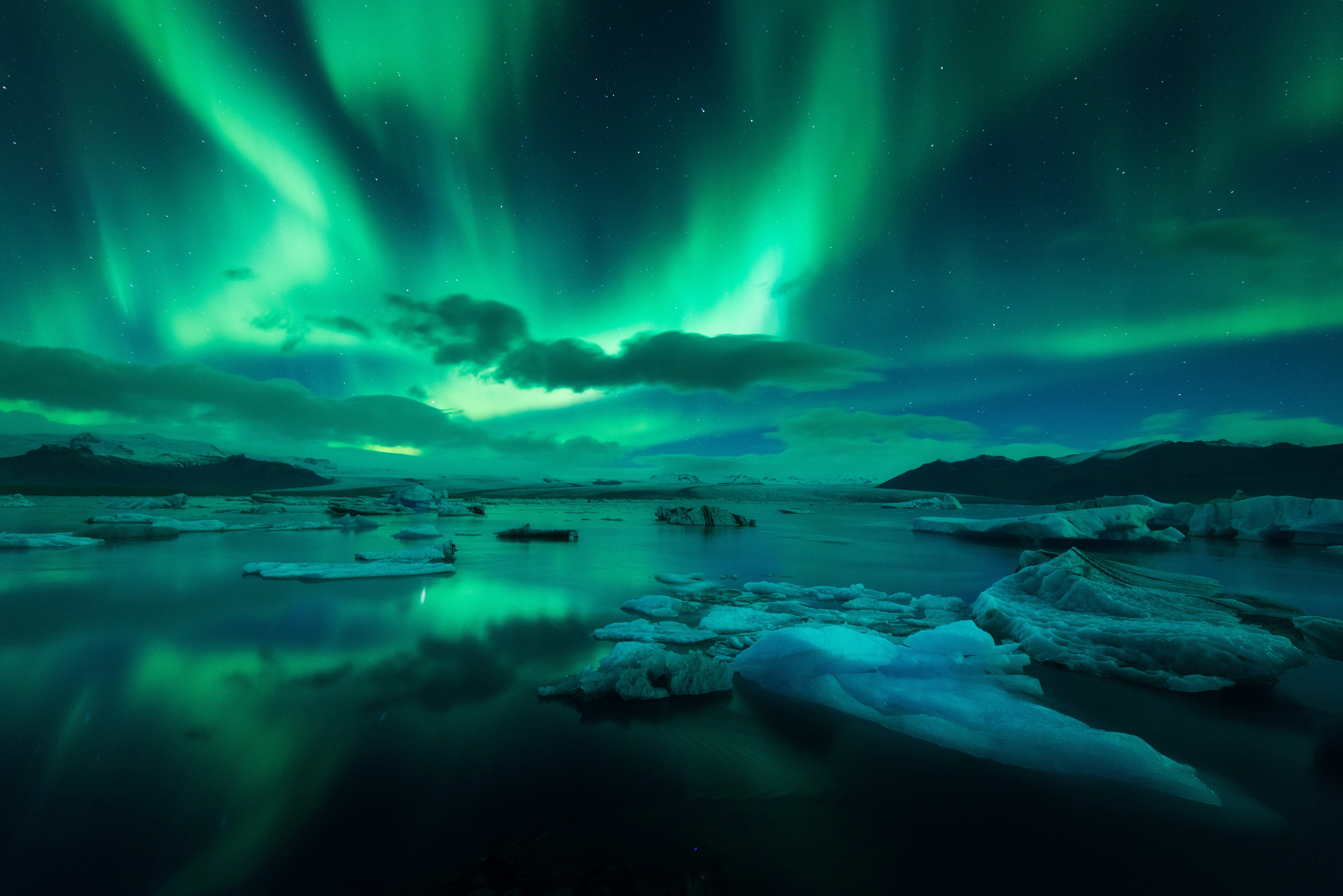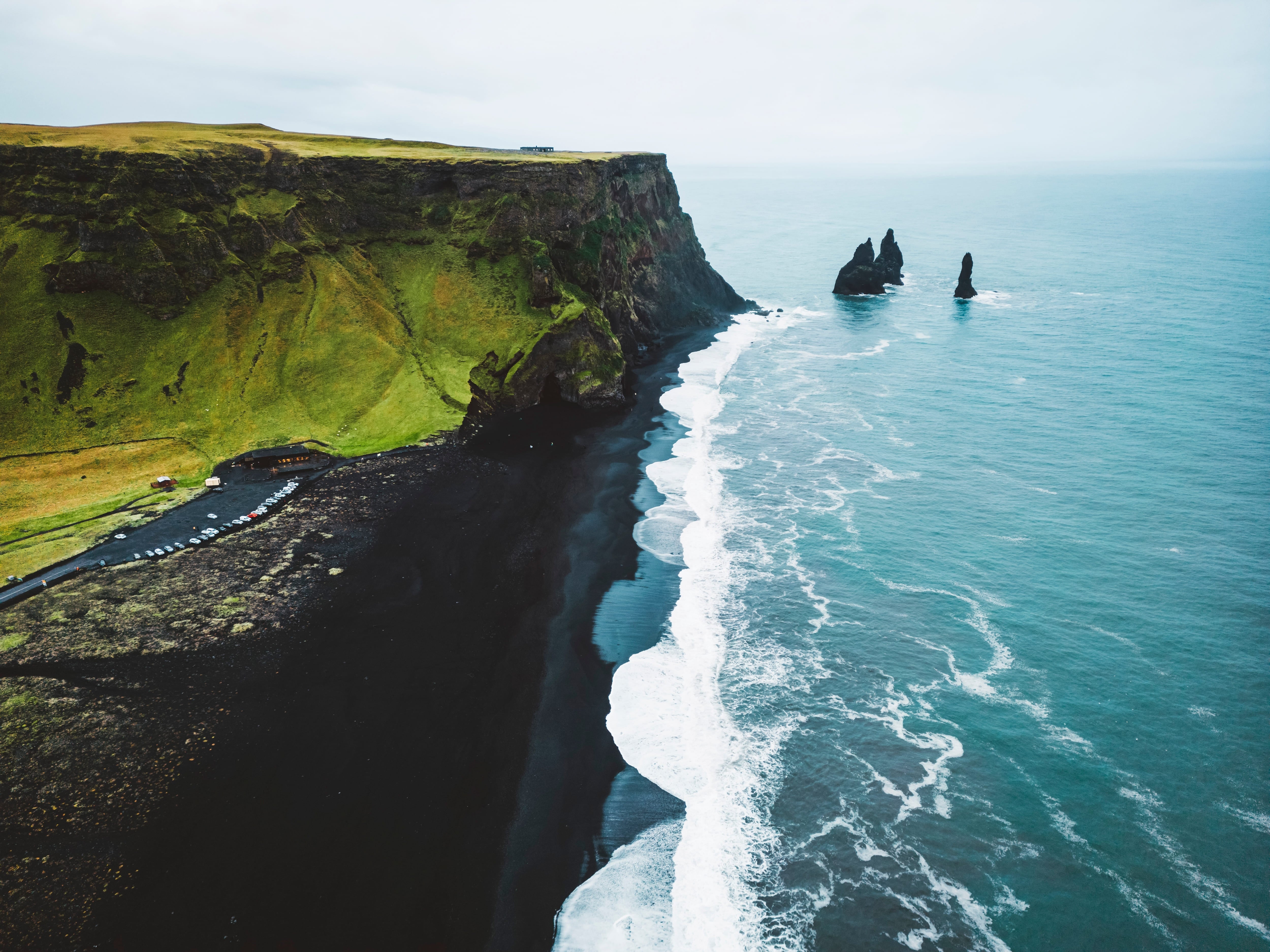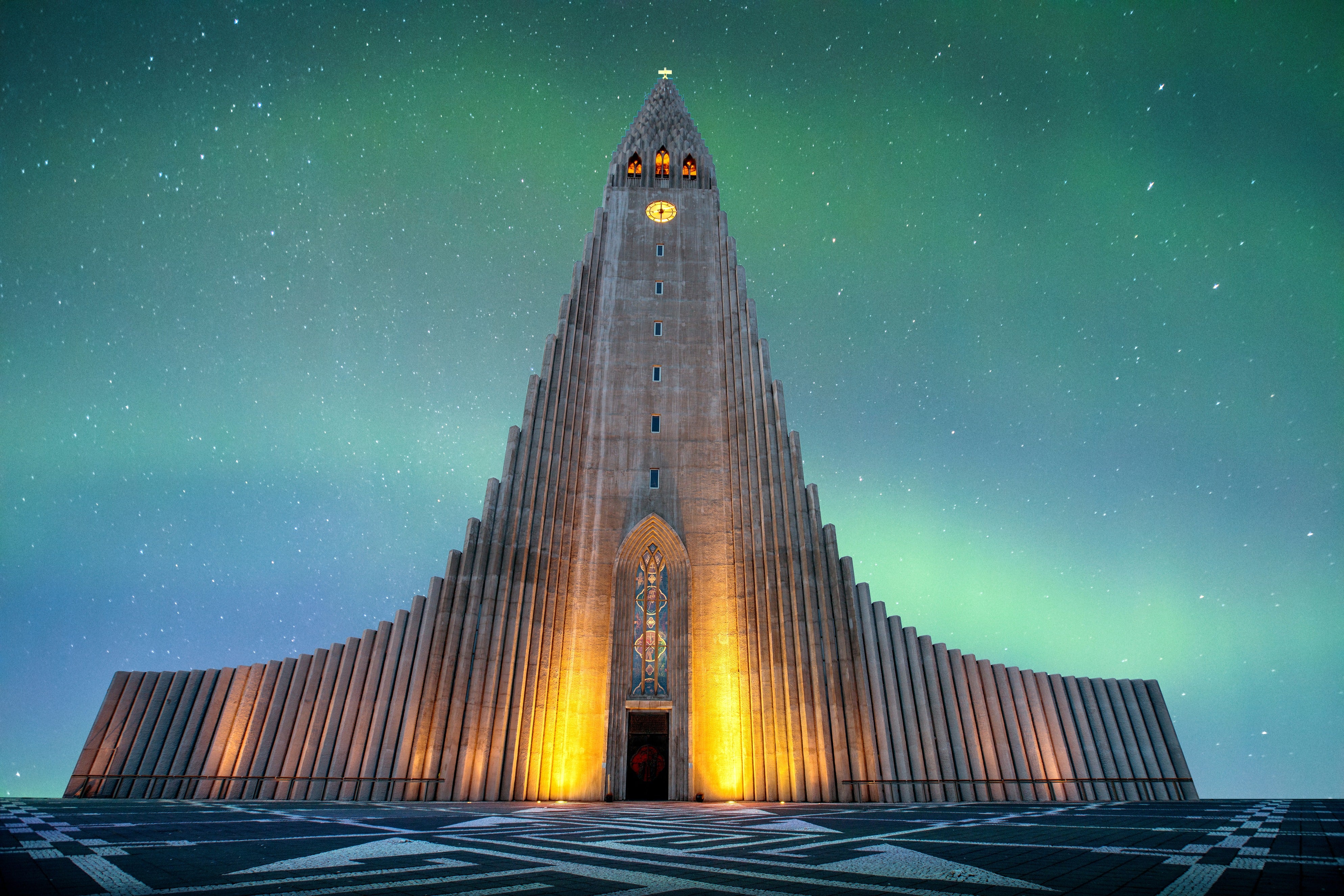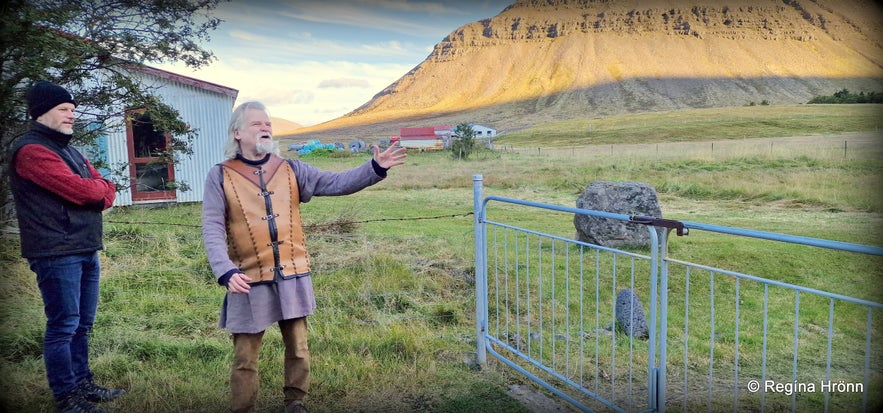
Gísli's saga is told in Gísla saga Súrssonar - the Saga of Gísli the Outlaw. We Icelanders know this story well as we have to read it in school when we are teenagers.
Gísli was on the run for 13 years in the Westfjords of Iceland, after having killed his brother-in-law in his bed-closet while his pregnant sister was lying next to her husband! Now, what possessed him to do such a terrible thing?
Top photo: Elfar Logi Haukadalsgoði on a guided Saga tour of Haukadalur
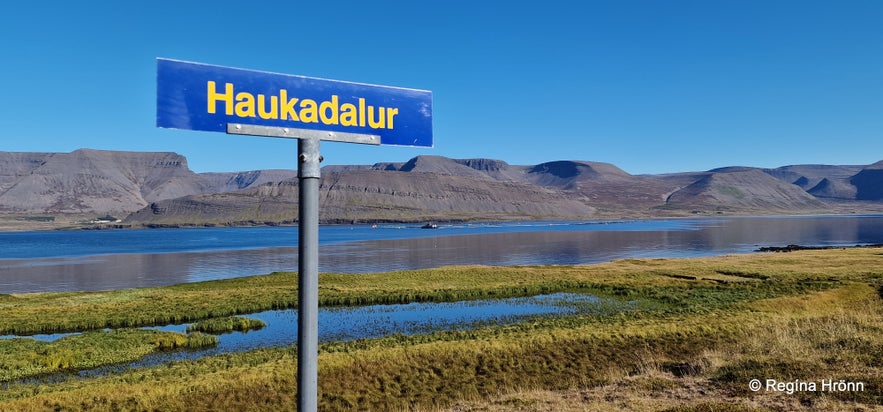 Haukadalur in Dýrafjörður fjord in the Westfjords of Iceland
Haukadalur in Dýrafjörður fjord in the Westfjords of Iceland
Gísla Saga Súrssonar is a story about love, jealousy, honour, murder, betrayal, best friends, and a family feud.
And of course, blood revenge, as the custom was back in these days, that if you kill my brother or blood brother or kin, I will kill you or your kin.
Which meant that there was endless blood revenge in the days of the Vikings in Iceland. There was a way around this and that was to pay a fine (fégjöld).
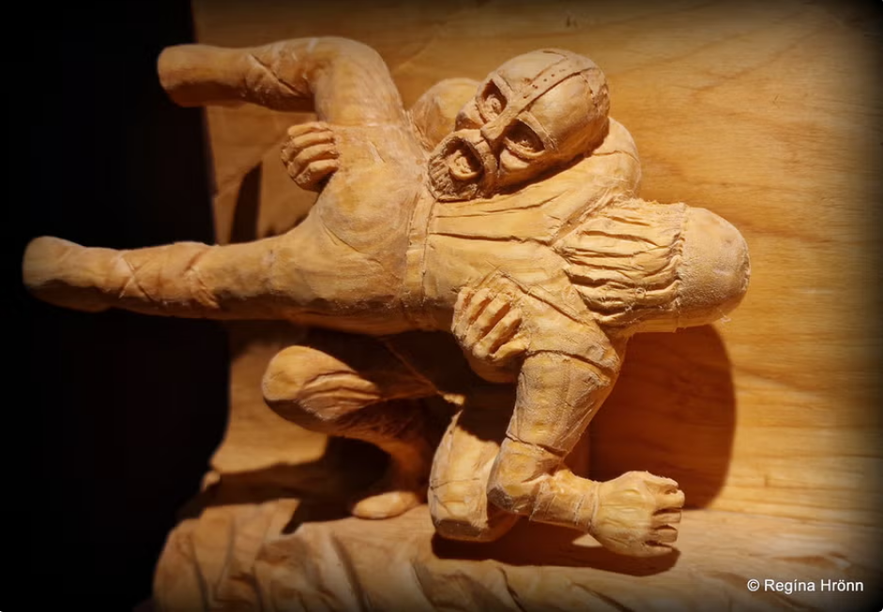
If you want to get acquainted with the story of Gísli Súrsson before visiting the beautiful Westfjords of Iceland, then you can read the Saga here: Gísla Saga Súrssonar in Icelandic, Swedish and English.
The Saga about Gísli the Outlaw was most likely written by the end of the 13th century and is believed to have taken place around 940-977 (980).
You will see Saga information signs in various places in the Westfjords pointing out places of interest in the Saga of Gísli Súrsson. Ten signs are marked, but 3 of them are not up yet; no 5, 9, and 10.
I will show you the signs that I found, and tell you why these locations are important to the Saga of Gísli the Outlaw.
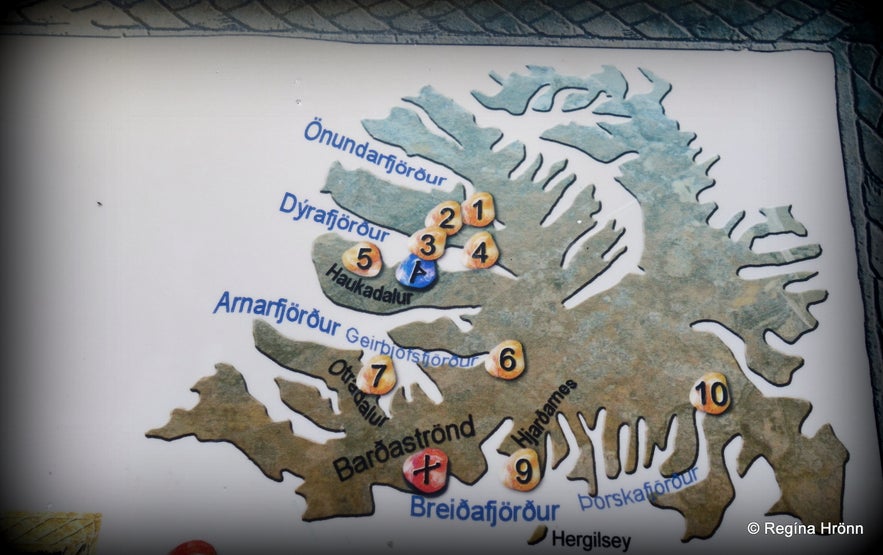 The Saga signs in the Westfjords - signs no 5, 9, and 10 are not up yet
The Saga signs in the Westfjords - signs no 5, 9, and 10 are not up yet
The Saga unfolds in this way:
The family fled from Norway after a duel, murder, dispute, and revenge, which ended in their farm being burnt down, and the family had a narrow escape. Twelve people perished in the fire inside the farm.
This, of course, had to be revenged, so they burnt down the farm of their enemies. As I told you earlier then blood revenge was the custom at this time and again twelve people were burnt to death inside the farm.
The longer version of Gísla Saga tells the story a bit differently, but I will stick to the shorter version.
In around 950, the family then fled to Iceland and settled in Sæból in Haukadalur in Dýrafjörður.
Haukadalur valley in Dýrafjörður fjord in the beautiful Westfjords of Iceland
They arrived late in the settlement of Iceland (which began around 874), and the settler of Haukadalur, Vésteinn Végeirsson, gave them half of Haukadalur valley, Landnáma - the Book of Settlements tells us.
The longer version of Gísla Saga published in Íslenzk fornrit - Vestfirðinga sögur, tells us that they bought the land from Þorkell Eiríksson in Keldudalur, so there are some contradictions here.
After the death of their parents, the siblings continued to live at Sæból farm, until Þórdís, who was the eldest, married the Chieftain Þorgrímur Freysgoði from Þórsnes on the Snæfellsnes peninsula.
Then Gísli, and his brother, Þorkell, moved out of Sæból, built another farm nearby, and called it Hóll.
Atrocities took place in the Haukadalur valley; murders, and betrayals.
 The current Sæból in Haukadalur valley
The current Sæból in Haukadalur valley
When you visit this place and see how peaceful it is, then it is hard to think about the many terrible events that happened here so many centuries ago.
The locals in the Westfjords talk about Gísli and the characters in the Saga as old friends.
My grandmother was born at Sæból farm in Önundarfjörður, the next fjord to Dýrafjörður and she told me graphic stories about Gísli before I read the actual Saga.
This is also how I feel about the Icelandic Sagas, I have a real affinity for the people we read about in the Sagas, and the Sagas (44) are my favourite read. I am no expert though in the Sagas, just an avid reader of the early history of my country.
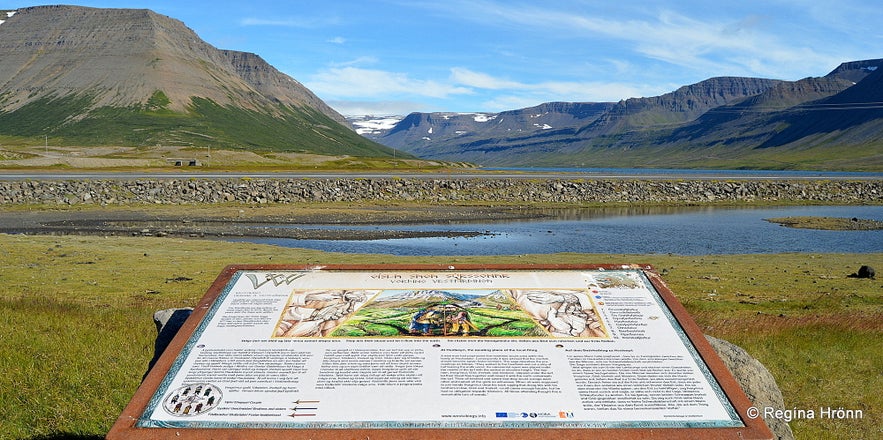 A Gísla Saga Súrsson information sign in Dýrafjörður - sign no 4
A Gísla Saga Súrsson information sign in Dýrafjörður - sign no 4
Auður Vésteinsdóttir was the wife of Gísli Súrsson. She had a brother named Vésteinn. They were the children of the abovementioned Vésteinn Végeirsson.
Auður and Vésteinn were the great-great-grandchildren of Dýri, the settler of Dýrafjörður fjord.
Gísli, his brother Þorkell, Gísli's brother-in-law Vésteinn, and their brother-in-law Þorgrímur decided to become blood-brothers.
Which meant that they would swear, and be obliged to, revenge one another, were one of them to be killed.
The best description in the Sagas of fóstbræðralag - brotherhood in blood - is written in Gísla Saga. You can see in the photo below how this ceremony was performed.
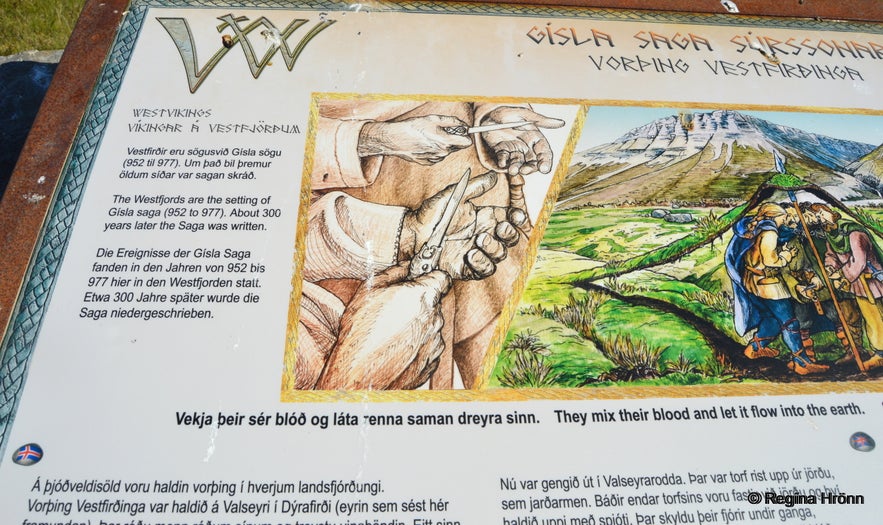 Blood-brothers - sign no 4
Blood-brothers - sign no 4
Þorgrímur, the other brother-in-law of Gísli, opted out of the brotherhood in the blood ceremony, as he didn't want to be obliged to revenge evil acts against Vésteinn, who was not related to him, nor connected to him in any way apart from being Gísli's brother-in-law.
Or were there other reasons why he opted out?
Þorgrímur and Þorkell were best friends, but Gísli started disliking Þorgrímur.
Gísli and Vésteinn went abroad and Gísli returned to Iceland earlier than Vésteinn. In the spring Gísli held a spring party.
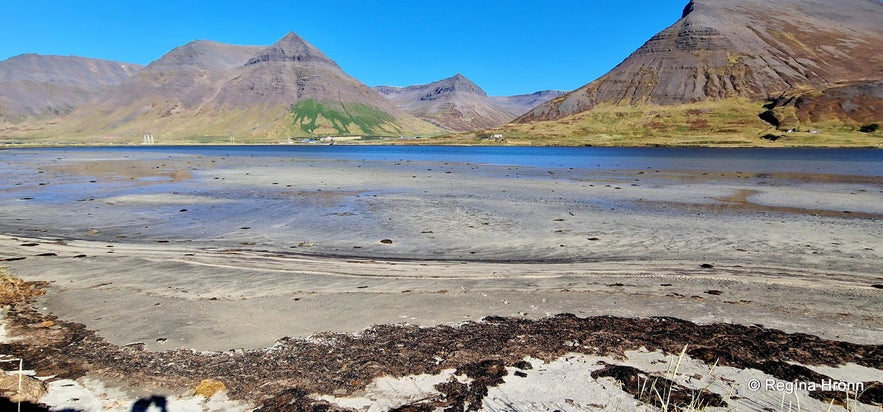 Önundarfjörður fjord
Önundarfjörður fjord
After returning to Iceland, Vésteinn, who lived in Önundarfjörður fjord was on his way to visit Gísli and his sister Auður in Dýrafjörður, bearing exquisite gifts.
Gísli was told that Vésteinn had returned and was on his way to the party. Gísli had an inkling that Vésteinn was going to be killed at the spring party at Hóll farm, where Gísli lived, and sent his labourers to warn Vésteinn and convince him to turn around.
The first Saga information sign to be erected is number 2 on the map.
It was unveiled on the 12th of June 2008 on Gemlufallsheiði heath between Dýrafjörður and Önundarfjörður fjords. You can see on the sign that Vésteinn rode via Gemlufallsheiði heath.
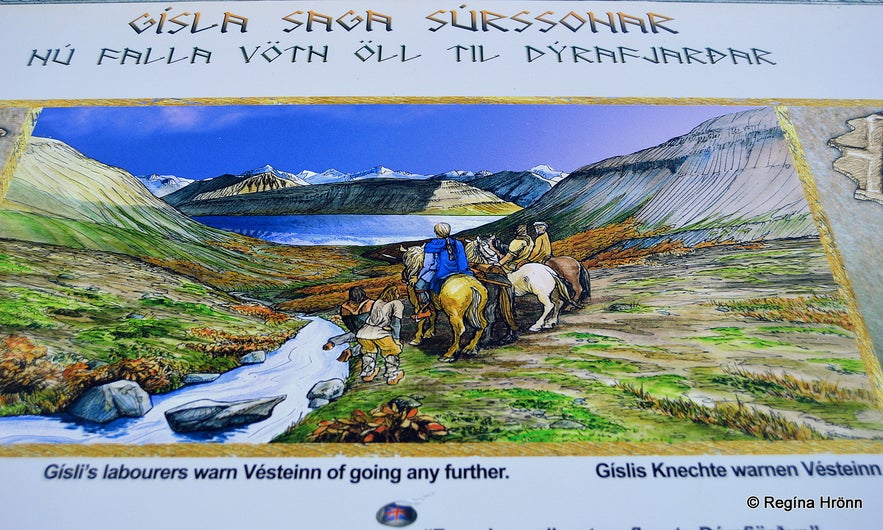
The information sign no 2 on Gemlufallsheiði heath between Dýrafjörður and Önundarfjörður
Why did Gísli think that Vésteinn's life was in danger?
The thing is that Ásgerður the wife of Þorkell and Auður the wife of Gísli had been talking amongst themselves while sewing, and Þorkell Súrsson overheard their conversation.
As it turned out then Ásgerður had fancied Vésteinn before she married Þorkell and still loved him more than she loved Þorkell.
And Auður had met Þorgrímur before she married Gísli, but she deeply loved her husband.
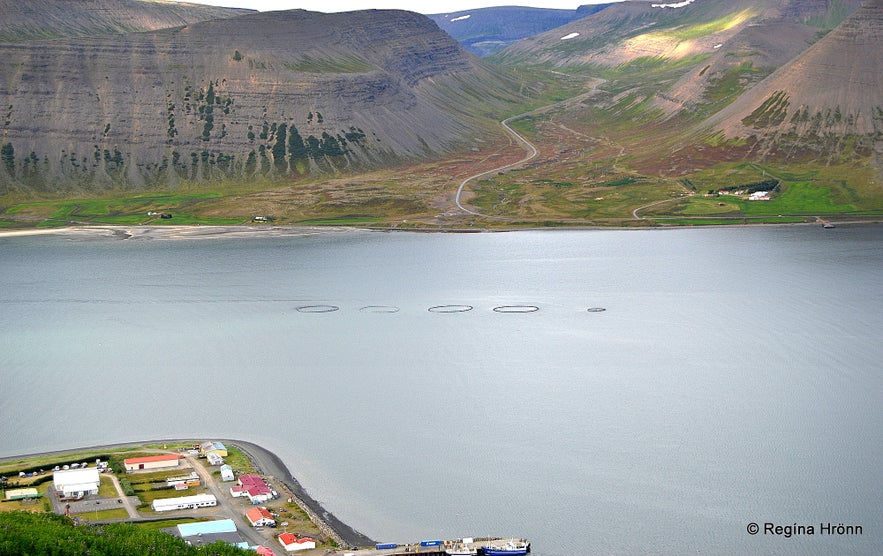 Gemlufallsheiði heath as seen from Mt. Sandafell
Gemlufallsheiði heath as seen from Mt. Sandafell
Since Þorkell had overhead the women's conversation he was mad at his wife, and refused her access to their bed that night. He soon calmed down though when she threatened to divorce him and take her dowry.
Auður told her husband Gísli about their conversation and that Þorkell had overheard them. She told him that she feared that Þorkell would kill her brother Vésteinn and asked for her husband's advice in this matter.
This is why Gísli didn't want his brother-in-law to stay at his farm during the spring party, as he feared that his brother Þorkell would kill him out of jealousy. Or did he suspect somebody else?
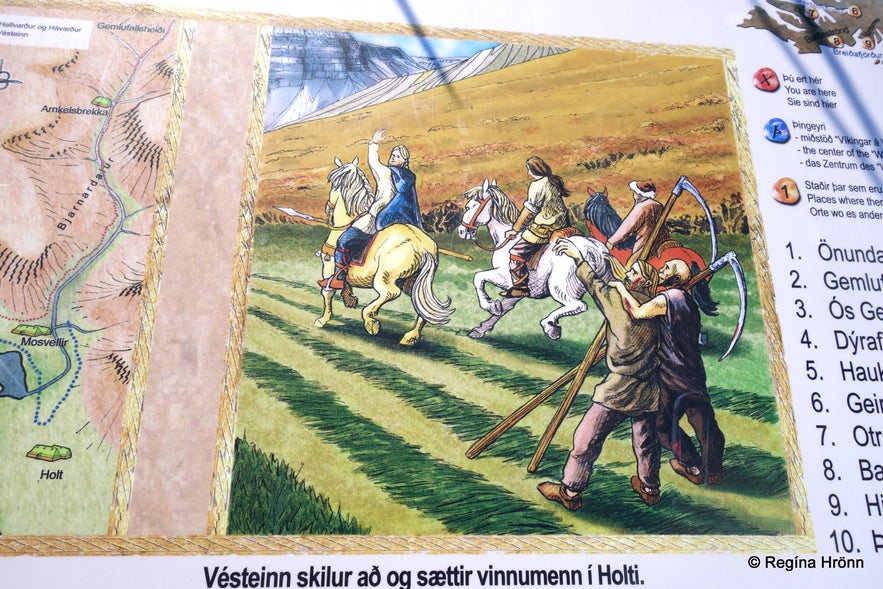 The Saga sign in Önundarfjörður is number 1 - Vésteinn settled the dispute
The Saga sign in Önundarfjörður is number 1 - Vésteinn settled the dispute
Sadly Vésteinn had taken a detour to settle a dispute between 2 farm-hands at Holt, and Gísli's labourers missed him.
When they finally met up with Vésteinn on Gemlufallsheiði heath, Vésteinn said this sentence, which all Icelanders know:
"...Nú falla öll vötn til Dýrafjarðar...ok mun ek þangað ríða, enda em ek þess fúss“ - meaning: "...From here all waters flow to Dýrafjörður...".
This meant that he had come too far and it was too late to return to his home in Önundarfjörður.
I took a short video of the drive from Dýrafjörður into Önundarfjörður via Gemlufallsheiði heath
Vésteinn descended from the heath and met his kinswoman who lived at Gemlufall.
At Gemlufall there was a ferry across the fjord to Þingeyri, but the first mention of people ferrying passengers across the fjord was in the Saga of Gísli the Outlaw.
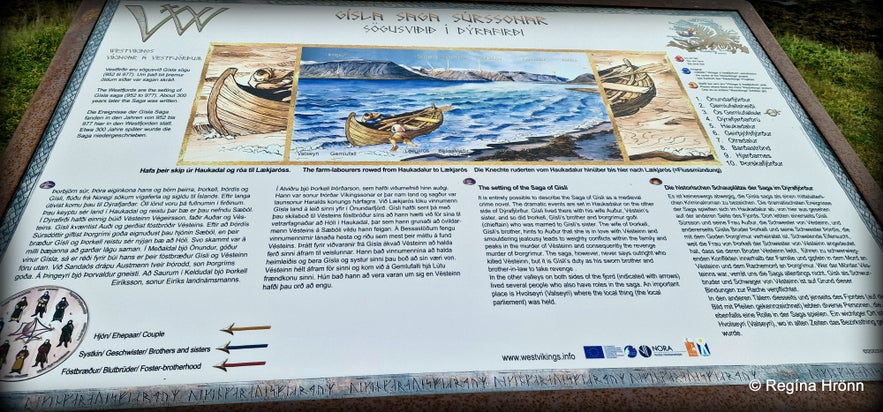 The information sign no 3 by the estuary of the Gemlufall river - here the labourers crossed the fjord
The information sign no 3 by the estuary of the Gemlufall river - here the labourers crossed the fjord
Vésteinn was repeatedly warned by different people not to visit Gísli, but he didn't want to listen to the warnings and rode straight to his death.
Vésteinn was murdered in the home of Gísli and Auður at Hóll, but who was the murderer?
While reading the story for the first time I was not sure, was it Þorkell or was it Þorgrímur?
Some clues in the story indicate that Þorgrímur killed Vésteinn, and some clues indicate that it was Þorkell.
 Did their farms look something like Skáli Hallvarðs Súganda?
Did their farms look something like Skáli Hallvarðs Súganda?
The longer version of Gísla Saga, which I read after I read the shorter version, the one that is taught in school, tells us that Þorgrímur Freysgoði killed Vésteinn.
And that even though he was the one who killed him then Þorkell was also to blame.
In a poem that Þorgrímur composed while playing a ball game against Gísli on Seftjörn pond, he confessed to the murder of Vésteinn. He looked in the direction of Véstein's burial mound and said:
"Right through his ribs,
My spear-point went crashing;
Why should I worry?
Twas well worth this thrashing."
 They hurried up and sailed across the fjord to warn Vésteinn
They hurried up and sailed across the fjord to warn Vésteinn
Gísli then ended up murdering his brother-in-law Þorgrímur while his pregnant sister, Þórdís, was lying in bed next to her husband!
This of course called for revenge, and well-deserved, as this was a terrible thing to do.
This chain of heartbreaking events led to Gísli's outlawry.
Grásíða - Greysteel - an enchanted sword and speer
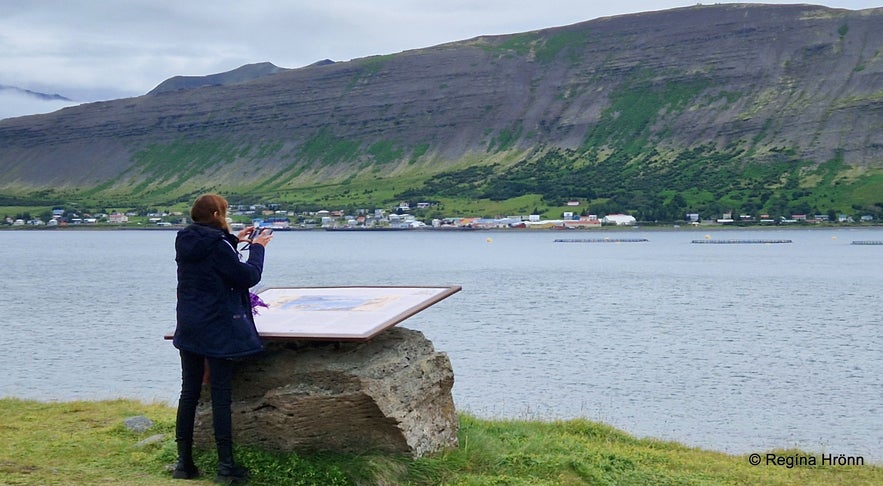
By sign no 3 in Dýrafjörður opposite Þingeyri village
While reading the story take note of the sword Grásíða. Grásíða was of the nature that the carrier of this weapon would always win in battle.
There is a much more detailed description of Grásíða in the English version of Gísla Saga than in the Icelandic version on the Saga Database, as it is translated from the longer version of Gísla Saga:
"Ah!" said Kol, "then will happen what ever happens with those things that are treasures - you will never wish to give it up. But for all that, I tell thee now that this sword will bite whatever its blow falls on, be it iron or aught else; nor can its edge be deadened by spells, for it was forged by the Dwarves, and its name is 'Graysteel.' And now make up thy mind that I shall take it very ill if I do not get the sword back. when I claim it."
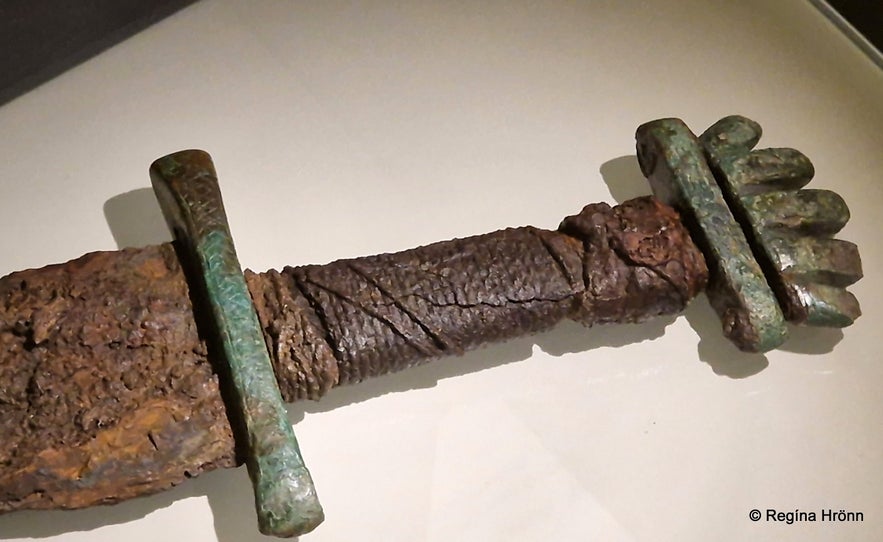 An old Viking sword at the National Museum of Iceland
An old Viking sword at the National Museum of Iceland
Here Kolur, who was a thrall (slave), is talking to Gísli (the uncle of Þórdís, Gísli, and Þorkell) when Kolur, who was the rightful owner of Grásíða, reluctantly lent the sword to Gísli for a duel.
After the duel, Gísli wanted to buy Grásíða, and even offered Kolur his freedom and land in exchange for the sword.
When Kolur didn't want to sell him the sword, Gísli killed Kolur with such great force that the sword Grásíða broke.
Kolur managed to mortally wound Gísli as well before he died, and a curse befell the family. Kolur said:
"It had been better now that I had got back my sword when I asked for it; and yet this is but the beginning of the ill-luck which it will bring on thy kith and kin."
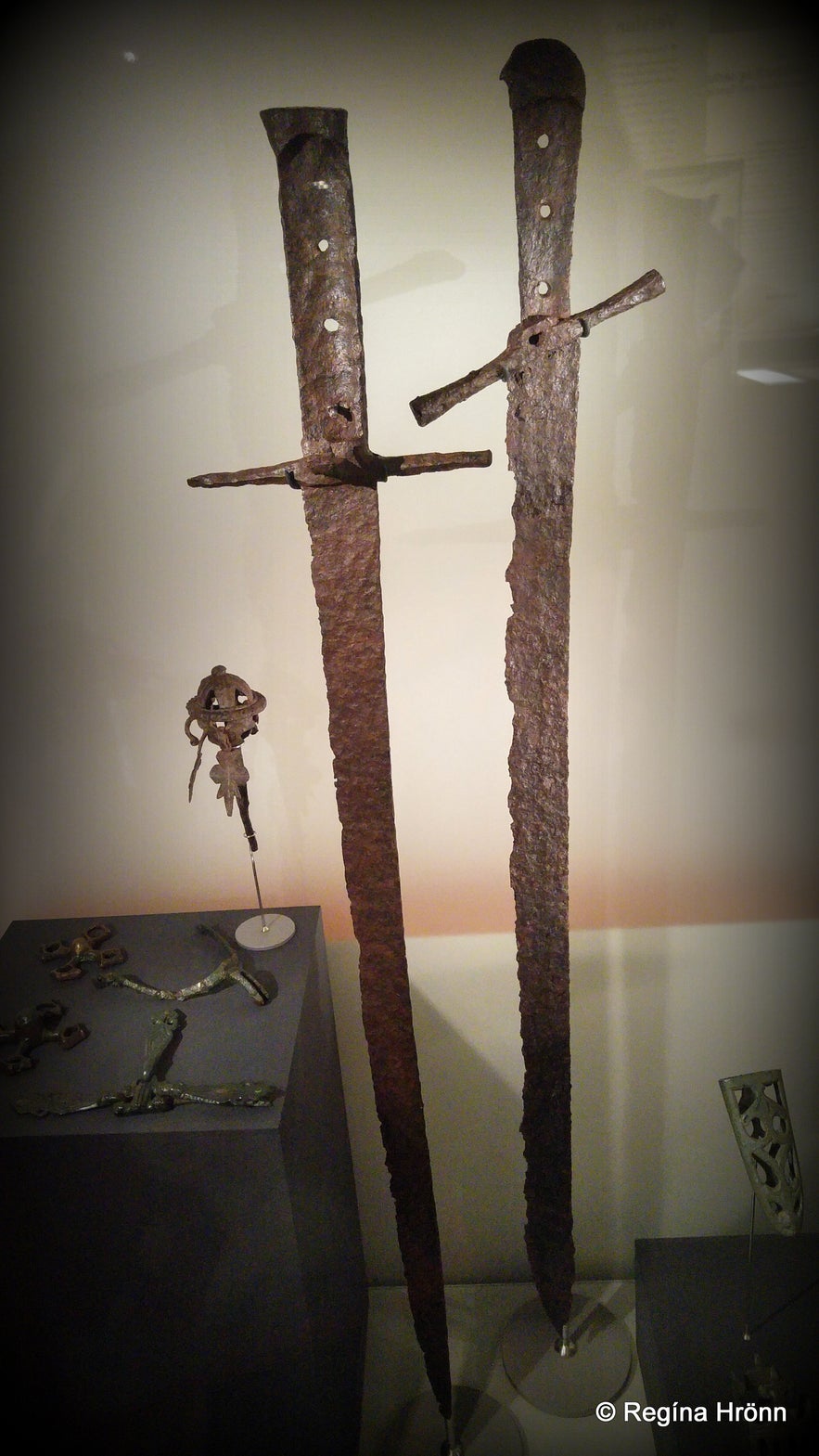 More Viking swords at Þjóðminjasafnið - the National Museum of Iceland
More Viking swords at Þjóðminjasafnið - the National Museum of Iceland
Both of them lost their lives and Grásíða for sure brought bad luck on the family. Þorbjörn, Gísli's brother, then inherited all of the possessions of his brothers and father.
After Þorbjörn's death in Iceland, his sons inherited the pieces left of Grásíða. When Þorkell and Gísli Súrsson split up their inheritance, Þorkell acquired the pieces of Grásíða. And Gísli got the farm Hóll.
Þorkell then moved into his sister's place at Sæból farm as Þorgrímur was his best friend, as well as being his brother-in-law.
And I think that Þorkell had murder on his mind and that the best weapon for this evil act would be Grásíða.
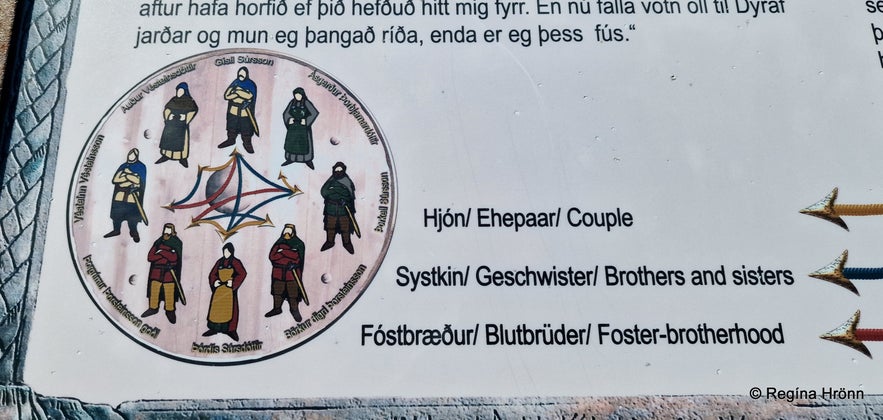 Who was married to who, and who was related to whom?
Who was married to who, and who was related to whom?
From the pieces of Grásíða, Þorkell had a speer made. Þorgrímur Freysgoði made the speer, and they had asked Þorgrímur nef to be present, as he was a great sorcerer, so again the speer was enchanted like the sword Grásíða, which was made by the dwarfs, had been.
And with the speer Grásíða, Vésteinn was killed.
Gísli when pulling out the speer from Véstein's wound, recognized that the speer was made from pieces of Grásíða and thus feared that his brother, Þorkell, might have killed Vésteinn. Or did he suspect Þorgrímur?
Later on, with the same weapon Gísli killed Þorgrímur. He pinned Þorgrímur to the bed with Grásíða and left the speer in the wound. Back then, the one who removed the weapon from the wound was obligated to revenge for the death of that person. Börkur digri removed the speer from his brother's wound.
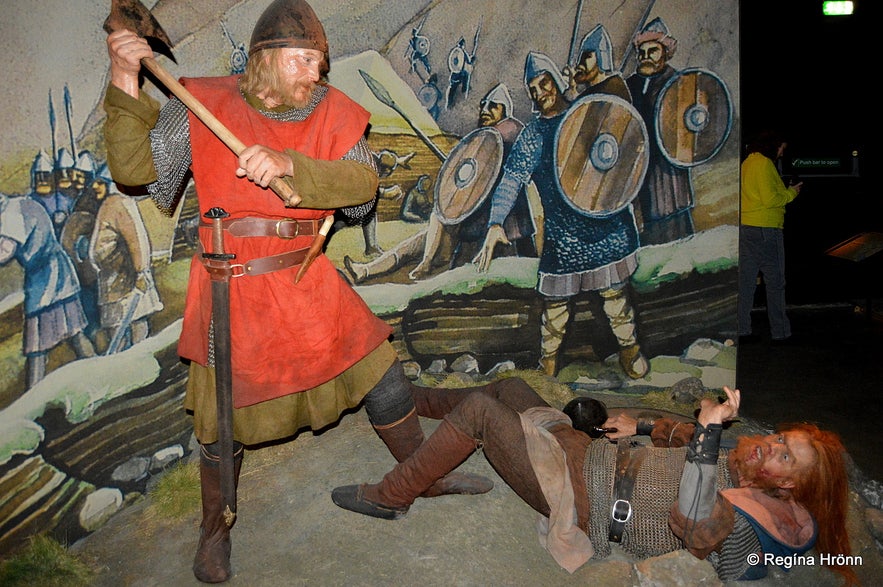 Sturla Sighvatsson was killed in 1238 in Örlygsstaðabardagi - as depicted in the Saga Museum
Sturla Sighvatsson was killed in 1238 in Örlygsstaðabardagi - as depicted in the Saga Museum
Grásíða shows up in Sturlunga - Íslendingasaga a couple of centuries later, when Guðlaugur Eyjólfsson killed Björn Þorvaldsson with the speer Grásíða.
This happened in 1221 in the battle at Breiðabólstaður in Fljótshlíð í South Iceland (Íslendingabók, page 55).
And the Grásíða speer shows up again in 1238 in the Örlygsstaðarbardagi battle, which I told you about in another travel-blog: Bloody Viking battles in Skagafjörður in North Iceland.
Then Sturla Sighvatsson fought his last battle with the speer Grásíða and it had become so old and worn that Sturla had to constantly step on it to level it out. Sturla died in this bloody battle along with many of his kinsmen.
It was a terrible battle and it brings tears to my eyes, every time I read Sturlunga.
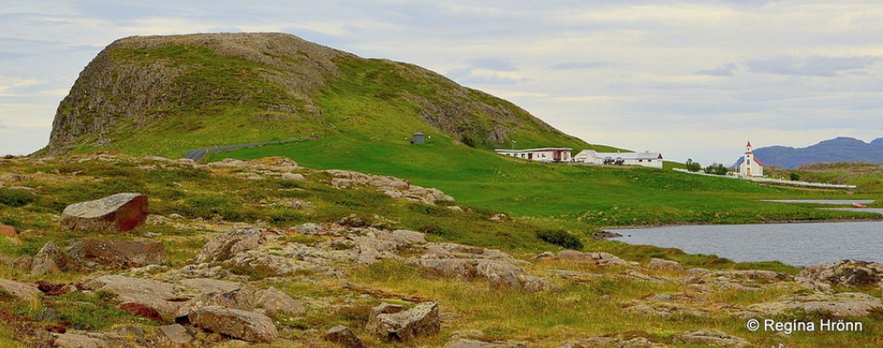
Now, back to the plot of the story:
The child Þórdís Súrsdóttir was carrying was Þorgrímur Þorgrímsson, better known as the noted Snorri goði, who lived at Helgafell on the Snæfellsnes peninsula, a major character in Eyrbyggja Saga and more Sagas.
Chieftain Þorgrímur, whom Gísli killed, was no ordinary man, but the son of Þorsteinn þorskabítur at Helgafell, and the grandson of the settler Þórólfur mostrarskegg, who was the first one to live at Helgafell on the Snæfellsnes peninsula (Þórsnes).
We read about these people in Eyrbyggja Saga, which is an excellent Icelandic Saga, and here Gísla Saga Súrssonar and Eyrbyggja Saga intertwine. I love it when the Sagas intertwine :)
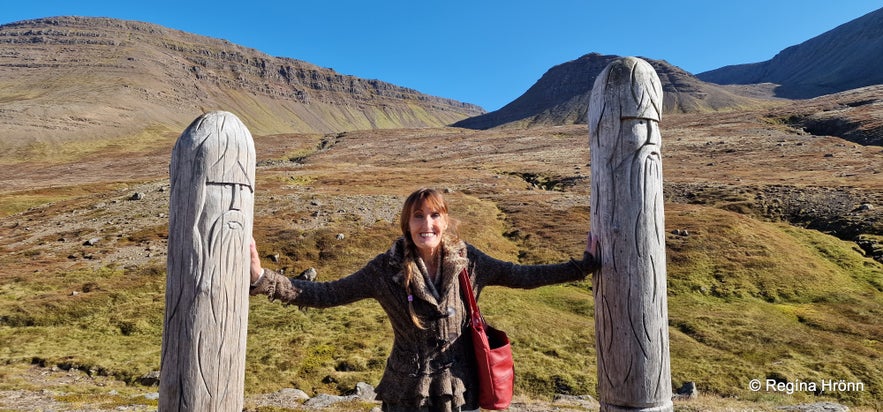 There are 2 Viking tree statues by the Saga sign on Gemlufallsheiði
There are 2 Viking tree statues by the Saga sign on Gemlufallsheiði
Börkur digri (the stout) was eager to revenge his brother, but he didn't know who had murdered him.
But he was also obligated to marry his brother's pregnant wife, as he inherited Þórdís after Þorgrímur's death, and thus the sister of Gísli moved to Helgafell after a couple of semesters living with Börkur at Sæból.
I tell you a little later in this travel-blog how she found out who was the murderer.

One of the saga signs above Geirþjófsfjörður - they are signs no 6
Börkur digri, after finding out that Gísli was the murderer, got his cousin Eyjólfur grái, who lived in Otradalur in Arnarfjörður fjord in the Westfjords, to hunt the brother of Þórdís down and kill him!
Eyjólfur grái and Börkur were both descendants of our best-known settler woman Auður djúpúðga. I visited Otradalur but couldn't find the Saga sign.
I have been told by the people who erected the Saga signs that it is still there, maybe you can find it. If you find it would you send me a photo of it?
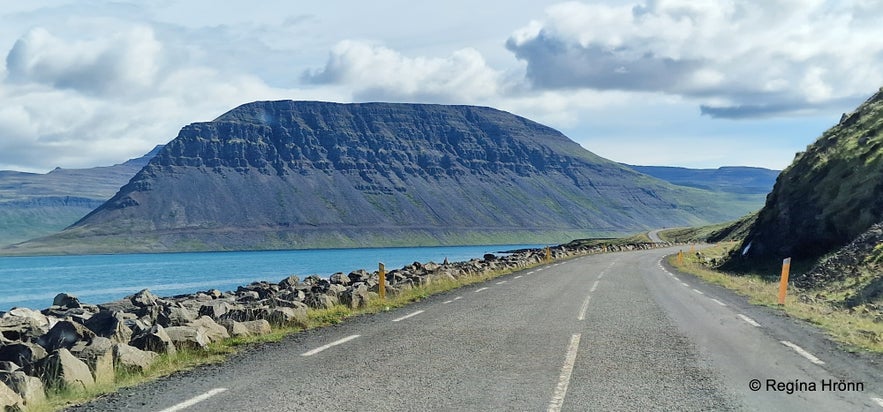 Driving in the vicinity of Otradalur
Driving in the vicinity of Otradalur
In 964 Gísli was sentenced to outlawry at Þórsnesþing which meant that he had to hide and could be killed on sight.
Gísli moved with his wife, Auður, into Geirþjófsfjörður fjord and stayed there for 3 years. He sought assistance, but every door seemed to be closed to him, i.e. the door of chieftains in this area.
We believe that this is due to sorcery and the spell that Börkur digri paid the sorcerer Þorgrímur nef to put on Þorgrímur's murderer, that nobody would help the murderer on land (Gísli was helped on Hergilsey island though, as the spell didn't state an island just land).
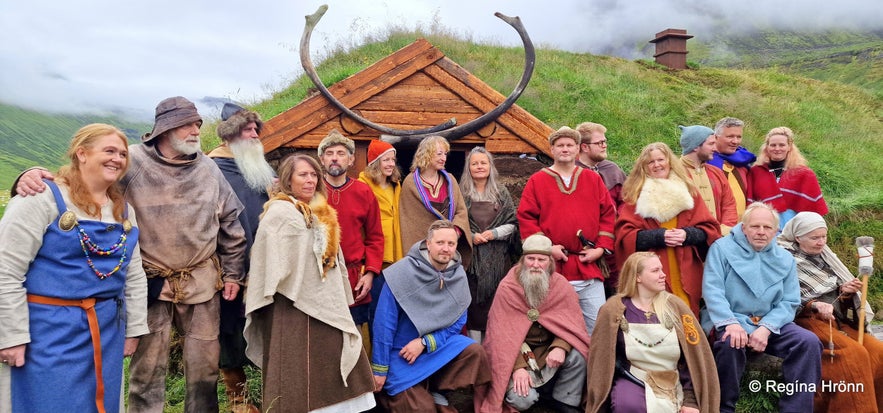 Were the Vikings dressed like this? - The opening of Skáli Hallvarðs Súganda
Were the Vikings dressed like this? - The opening of Skáli Hallvarðs Súganda
His brother, Þorkell, swore to warn Gísli if his life was in danger, and help him out financially, but he would not take him in. Þorgrímur had after all been his best friend.
Þorkell had seen the dirty shoes of Gísli at Hóll after the murder and hid them under the bed, so he knew right after the murder what Gísli had done.
While the family was still living in Norway, Gísli had killed a suitor of Þórdís, who was also Þorkell's best friend. So maybe, Þorkell and Þorgrímur wanted to kill Vésteinn, who was Gísli's best friend? And whom Þorkell's wife fancied.
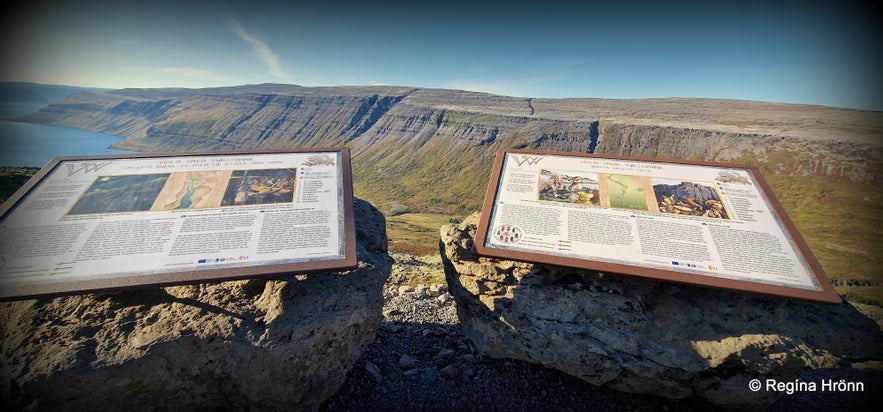 The new location of the information signs above Geirþjófsfjörður fjord where Auður lived
The new location of the information signs above Geirþjófsfjörður fjord where Auður lived
On Dynjandisheiði heath above that fjord, you will find 2 Saga signs, which were moved from their old location on the heath onto the new observation platform which was added in the fall of 2024.
Gísli had 2 hiding places in Geirþjófsfjörður and would join his wife whenever he could, but had to be on the run and hide in various places, as Börkur digri and Eyjólfur grái wanted him dead.
Eyjólfur or his men would check on Gísli in Geirþjófsfjörður, even offering money to Auður and threatening to hurt her if she wouldn't tell them where Gísli was hiding. She didn't budge.
The honour of the cousins was at stake and they had to kill Gísli, an eye for an eye and a tooth for a tooth.
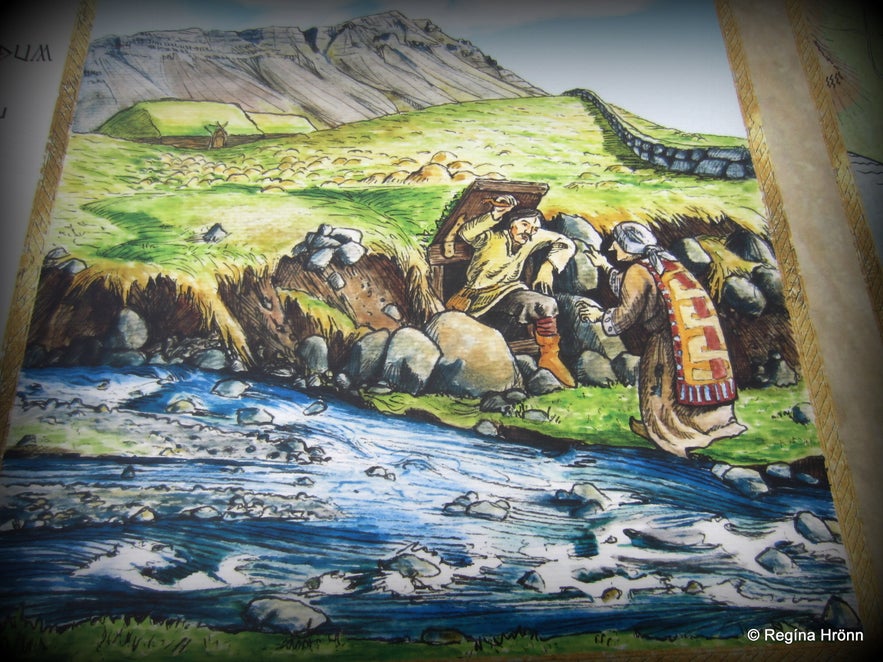 Women proved to be Gísli's best allies during his outlawry - Þorgerður hid Gísli - sign no 8
Women proved to be Gísli's best allies during his outlawry - Þorgerður hid Gísli - sign no 8
Women proved to be Gísli's best allies and hid him from his enemies.
Þorgerður, the mother of Gestur the wise Þorleifsson at Hagi on Barðaströnd, whom we read about in f.e.x. Laxdæla Saga, hid Gísli in a subterrean cabin at her farm Vaðal.
One entrance to the cabin was in her kitchen and another one by the creek.
Þorgerður was used to hide outlaws, and took excellent care of Gísli, and Gísli was never better off than in Þorgerður's care during his whole outlawry.
I told you about Gestur, the son of Þorgerður, in my travel-blog: Guðrúnarlaug Hot-tub - the Saga Hot-tub in Sælingsdalur Valley in West Iceland, where he deciphered Guðrún's dreams.
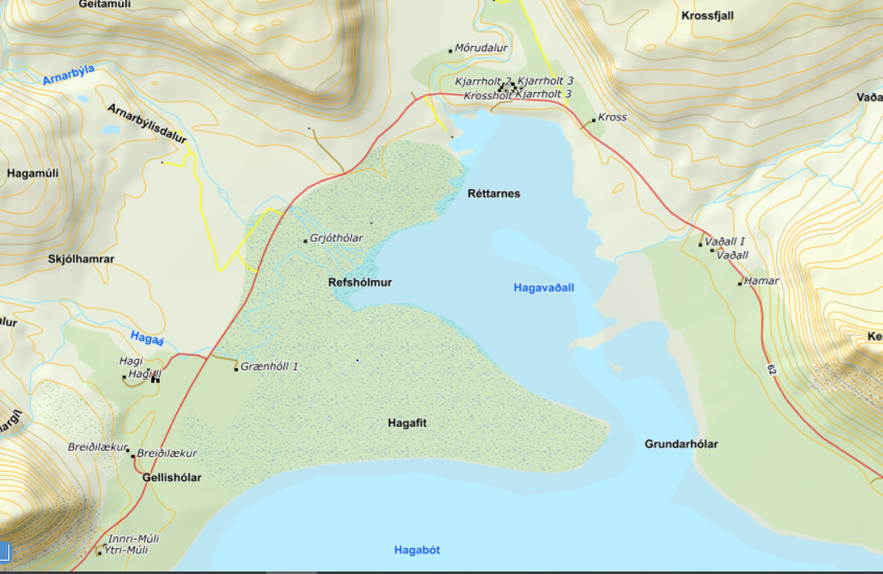
Þorkell gave Gísli a boat but again refused to host him. Gísli sailed to Hergilsey island on Breiðafjörður bay, turned the boat over, and thus pretended that he had drowned.
Ingjaldur, who lived on the island, and was related to Gísli, took him in. Gísli had fostered his children, and when the brothers split their heritage, the son of Ingjaldur went to live at Sæból, while the daughter remained with Gísli at Hóll.
Gísli spent the next 3 winters on the island and the summers with his wife in Geirþjófsfjörður.
Ingjaldur had a son called Helgi, who was mentally retarded. He was nicknamed Ingjaldsfíflið - or Ingjaldur's fool.
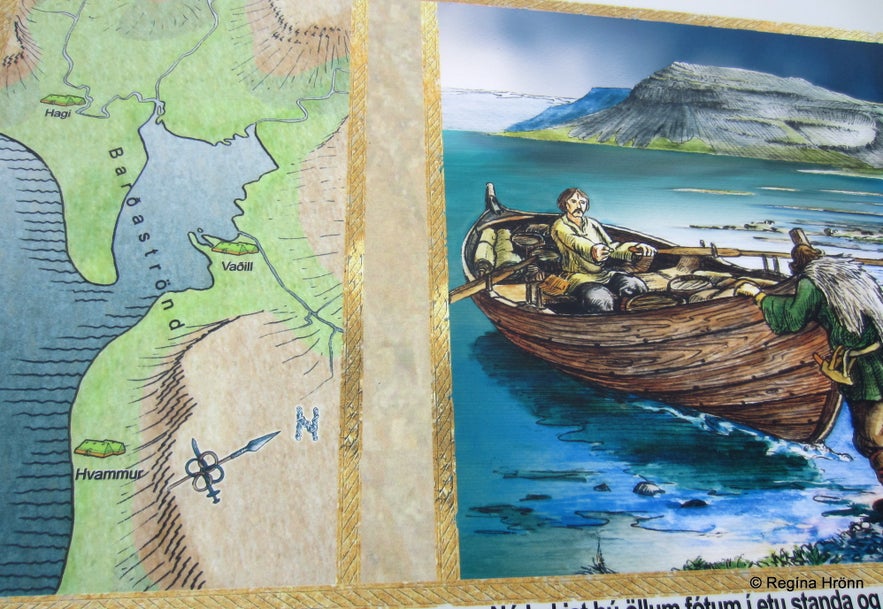 Hagi and Vaðall on Barðaströnd - Saga sign number 8 - Þorkell gives Gísli a boat
Hagi and Vaðall on Barðaströnd - Saga sign number 8 - Þorkell gives Gísli a boat
Helgi the spy was sent to Hergilsey to find out if Gísli was hiding on the island. He spotted Gísli and Börkur digri sailed to the island with a flock of men.
But Gísli tricked them and passed them on a boat pretending to be Ingjaldur's fool. This is a funny part of the story, that my grandmother never tired of telling me.
Well, we thought it was funny back then, today it is regarded as politically incorrect, and it was dreadful how mentally ill people were treated.
Not to mention how the Irish slaves were treated and belittled in the Sagas, which always makes me cringe when reading the Sagas.
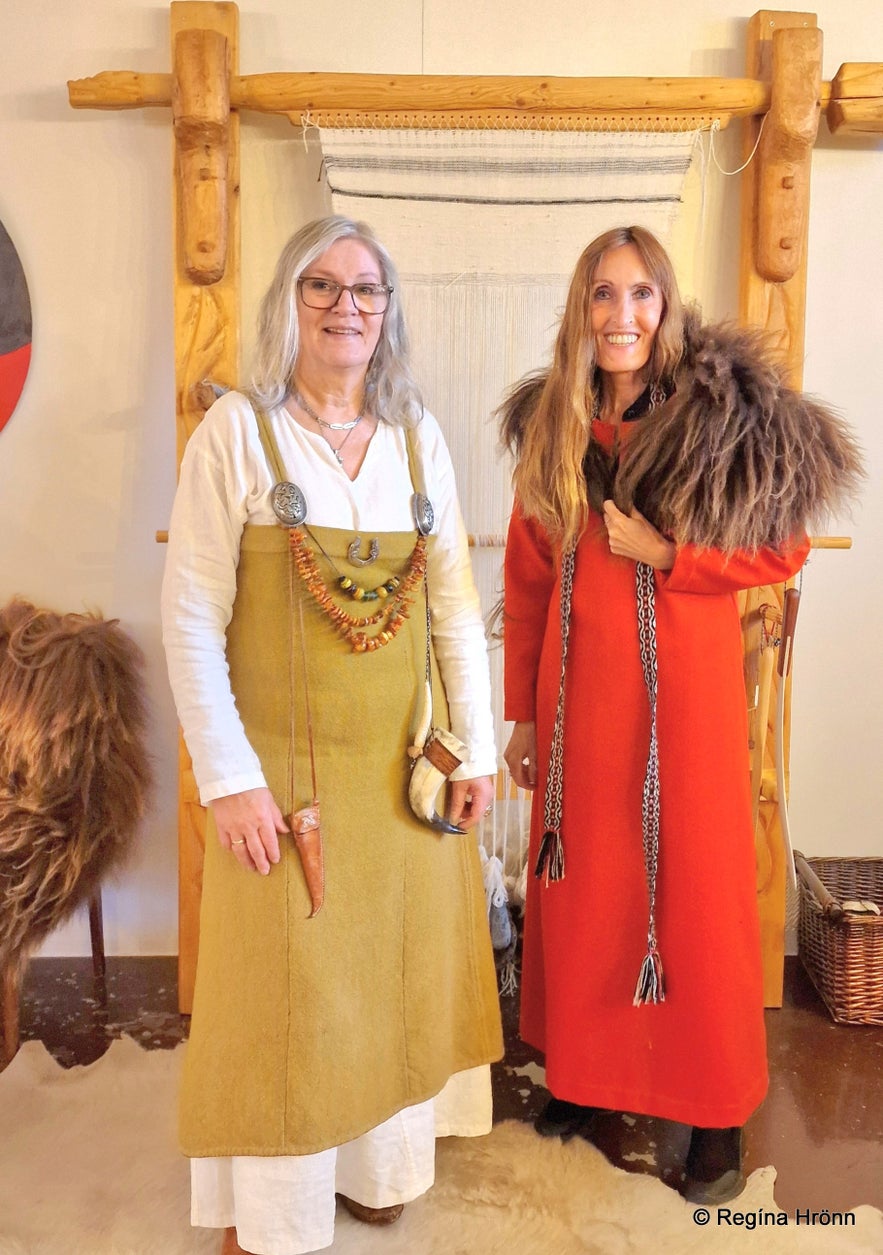 With Borgný, who knows all about the Saga signs in the Westfjords
With Borgný, who knows all about the Saga signs in the Westfjords
A funny story though in the Saga is when a very feisty shrew, Álfdís, hid Gísli in her bed. Her husband, Refur, told her to take all the linen off the bed, put Gísli on the straws in the bed, put the linen back, and lie on top of the heap.
She was then to be as foul-mouthed as possible when Gísli's enemies would come searching for him. They left after ransacking the house, but didn't dare come close to the feisty shrew (and Gísli).
These 2 stories, about Ingjaldur's fool and the feisty shrew, are what kids remember from reading the Saga of Gísli the Outlaw as teenagers in school. As teenagers, we were not very interested in the complicated plot of the story.
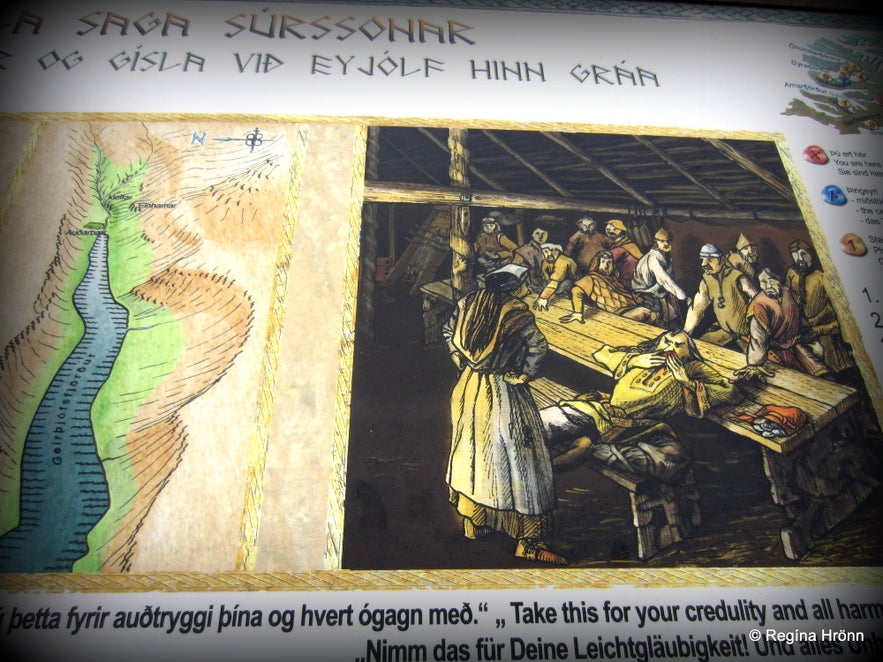
Auður hit Eyjólfur grái in the face with a bag of silver coins - sign no 6
And, the names are even more complicated as a great many of the names begin with Þór-, after Þór the Thundergod, and many characters bear the same name, which can get very confusing, even to us grown-ups.
The next thing that happened in the story (I am skipping a lot of events in this travel-blog of mine) is that Véstein's sons ended up killing Þorkell Súrsson and Gísli wanted to revenge his brother and kill the boys.
But let's not forget that they are Auður's nephews and you do not kill your wife's nephews! So the boys were not harmed after killing Þorkell. Auður was feisty as you can see in the following account, and I am sure that Gísli did not want to face her anger.
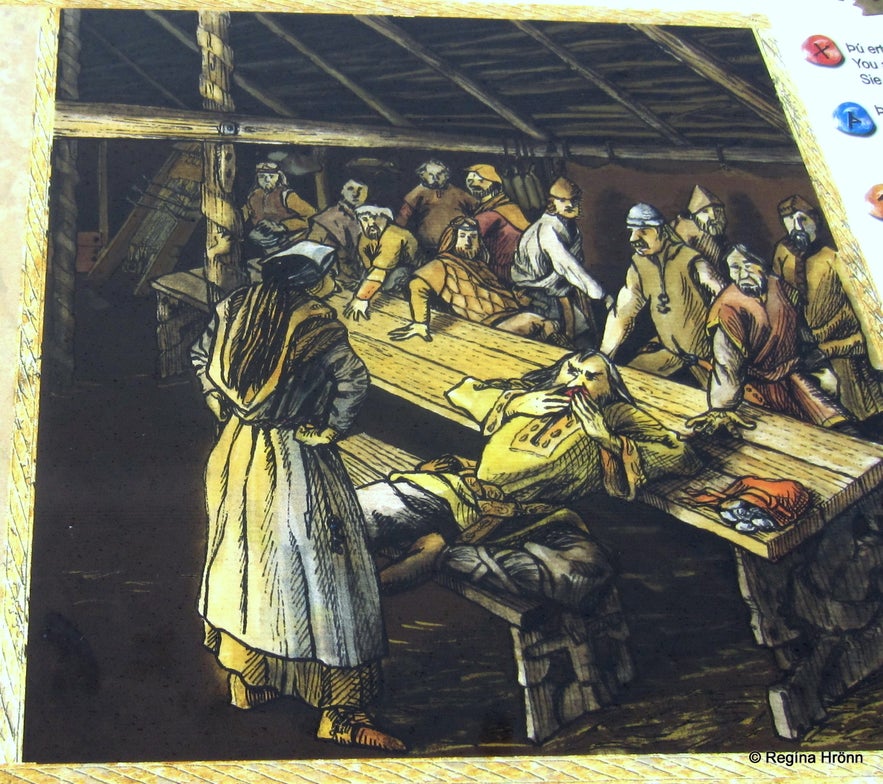 Let's have a closer look - what a disgrace this was for Eyjólfur grái
Let's have a closer look - what a disgrace this was for Eyjólfur grái
Once, Eyjólfur grái had heard that Auður was hiding her husband in Geirþjófsfjörður and rode to visit her.
He offered her a big bag of silver coins as payment for betraying her husband and told her that he would find her another husband, so that she could move out of this fjord where she was alone and far away from her friends and family.
Auður pretended to take the money and counted the silver coins, put them back into the leather purse, hit Eyjólfur grái in the face with the purse, and gave him a nosebleed.
She was livid and told him amongst other things an immortal sentence in the Icelandic Sagas: ..."Skaltu það muna, vesall maður, meðan þú lifir að kona hefur barið þig"!
- "Know this, you wretched little man, as long as you live, that a woman has beaten you".
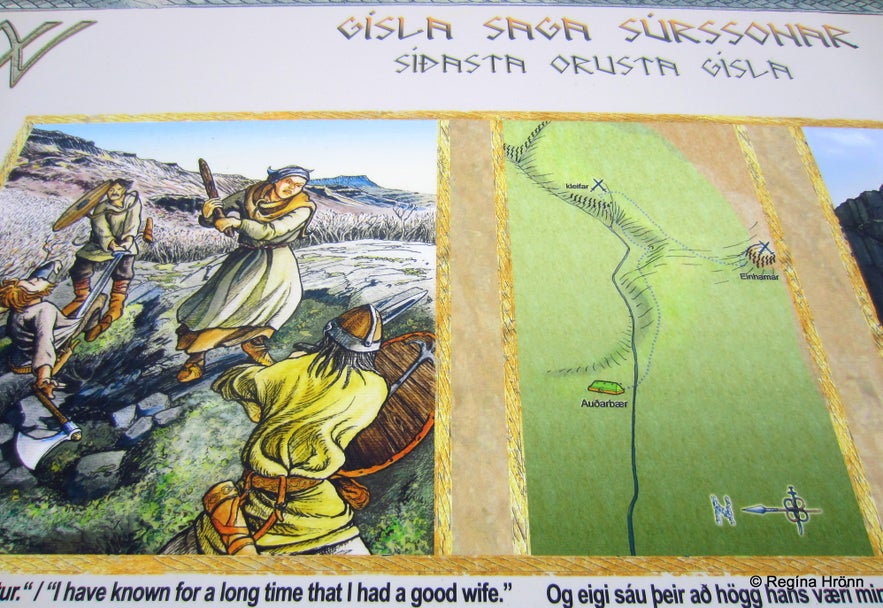
Auður fiercely protected her husband's life - sign no 6
Bounty hunters were sent by Eyjólfur grái to track down Gísli and kill him.
Gísli fought bravely and the Saga depicts him fighting on the cliffs of Geirþjófsfjörður, killing many of his attackers before they managed to kill him.
And Auður defended her husband until his dying day, and took part in the last battle against his enemies, where Gísli was killed.
On seeing how bravely his wife fought, Gísli said that he had known for a long time that he had a good wife, but that he didn't know how good she was until now.
They had no children, so there are no direct descendants of Gísli and Auður.
 The last battle of Gísli Súrsson - information sign no 6
The last battle of Gísli Súrsson - information sign no 6
There are some gory details here and extreme heroism. Many times in the Sagas the protagonist has some clever final words to say in his final moments, or even a poem.
Gísli with his guts hanging out composed a poem before he died. This brave man, who had been an outlaw for 13 years, second in line of the longest-living outlaws in Iceland, was killed in the year 977.
Only the legendary Grettir the Strong had been an outlaw for longer than Gísli.
A film was made about the Saga of Gísli Súrsson, Útlaginn, and for us, locals, it is difficult to watch our Saga heroes being killed.
We have a great affinity for the Saga heroes and they are such a rich part of our history.
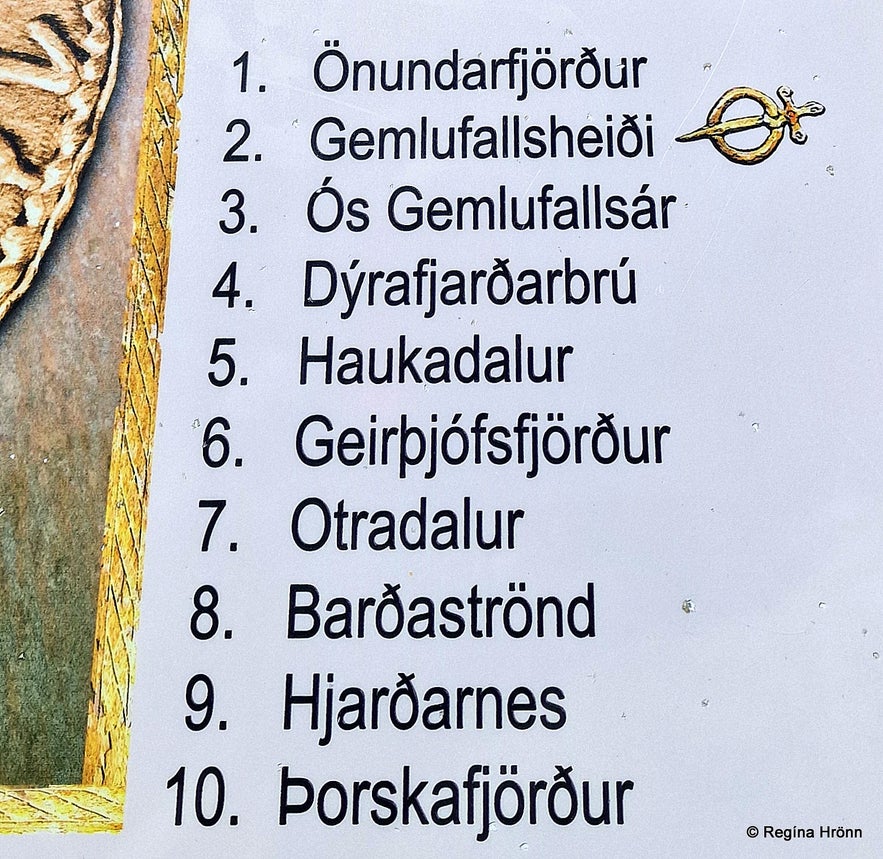 The locations of the Saga information signs in the Westfjords
The locations of the Saga information signs in the Westfjords
You will find these information signs about Gísli the Outlaw in important historic locations in the Westfjords, and there were plans to erect 10 Saga signs.
Some of them didn't get erected though. The Saga sign number 5 in Haukadalur has never been designed or printed, as negotiations with the landowners regarding a Saga path in Haukadalur valley, have not been fruitful.
Two other signs were not erected, number 9 and number 10. Number 9 was supposed to be by the farm Auðshaugur on Hjarðarnes on Barðaströnd. That sign would have given us information about the flight from Hergilsey Island.
Sign number 10 should have been erected in Þorskafjörður by the bust of Matthías Jockumsson. Now there is a new road in Þorskjafjörður.
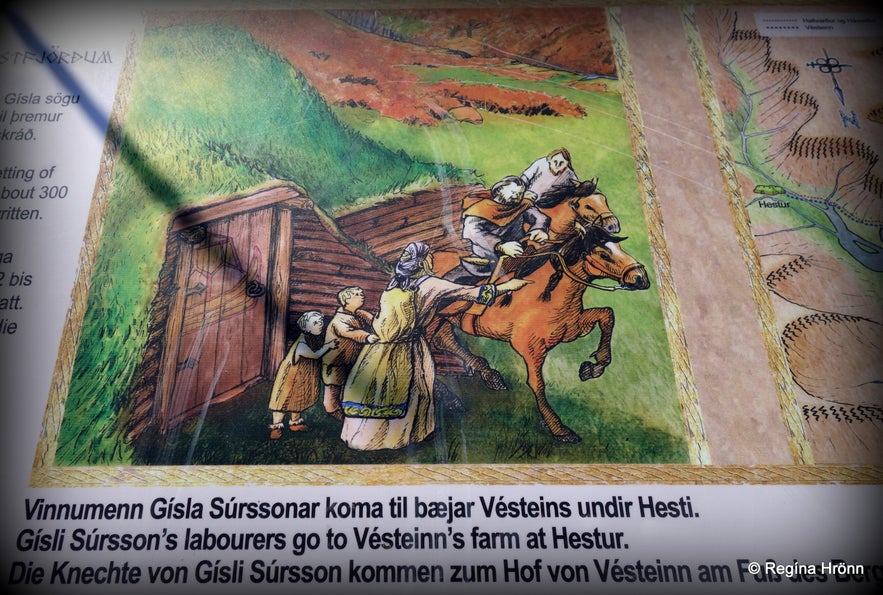 Saga sign number 1
Saga sign number 1
Borgný, who runs Skálinn in Þingeyri, told me that all the information signs are located by stopovers made by Vegagerðin - the Icelandic Road and Coastal Administration, where the safety of travellers is guaranteed, so the sign locations have to be erected in co-operation with the state.
It is a pity that some of these signs were not erected, but we are very grateful for the ones that were, kudos to the people who had them made. They make the Saga of Gísli the Outlaw come alive.
A Guided Tour of the Hometurf of Gísli Súrsson
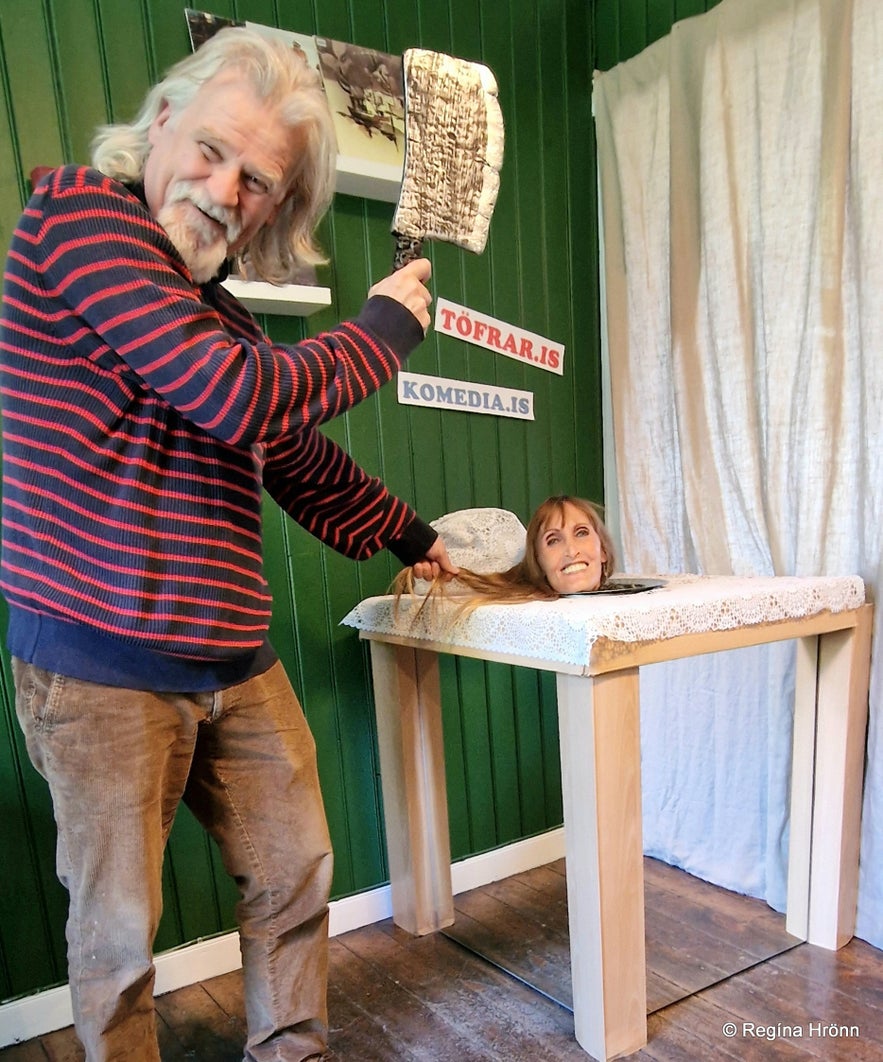 Meeting up with the Haukadalsgoði Chieftain in Haukadalur :)
Meeting up with the Haukadalsgoði Chieftain in Haukadalur :)
While I was working on my Viking activities in Iceland travel-blog, which is a work in progress, as I am always adding to it, I read in an article that Haukadalsgoði offers guided tours of Haukadalur.
And, I thought to myself that I must join the tour and add it to my Viking Activities in Iceland, as here we have both a Saga location and a Viking chieftain.
Elfar Logi, who is also Haukadalsgoði - the Viking Chieftain of the Haukdælir Viking clan, offers guided tours of the Saga location in Haukadalur.
 The Comedy theatre in Dýrafjörður from where the guided tour starts
The Comedy theatre in Dýrafjörður from where the guided tour starts
Back then, when I read the article I didn't even know that Elfar Logi, who manages the Act Alone festival, and Haukadalsgoði are the same guy :)
Elfar Logi booked my husband for the Act Alone festival in Suðureyri and again a month later at the Kómedíuleikhúsið - the Comedy theatre in Haukadalur.
In between my husband's acts, Elfar Logi dressed up in his Haukadalsgoði Viking Chieftain gear and told us that a group of 10 Icelandic friends had booked a guided tour of the homestead of Gísli Súrsson.
At the beginning of the tour - we were all Icelandic so the tour was in Icelandic
And he invited me to join them on the tour. I felt so lucky!
The tour starts by the Kómedíuleikhúsið theatre and lasts for an hour. I took a short video at the start of the guided tour.
You can see that we were all freezing, it was 6 degrees C, the wind was blowing from the sea and the sun had just disappeared behind the mountain.
Elfar Logi guides in Icelandic and English, but since we were all Icelandic then the tour was in Icelandic.
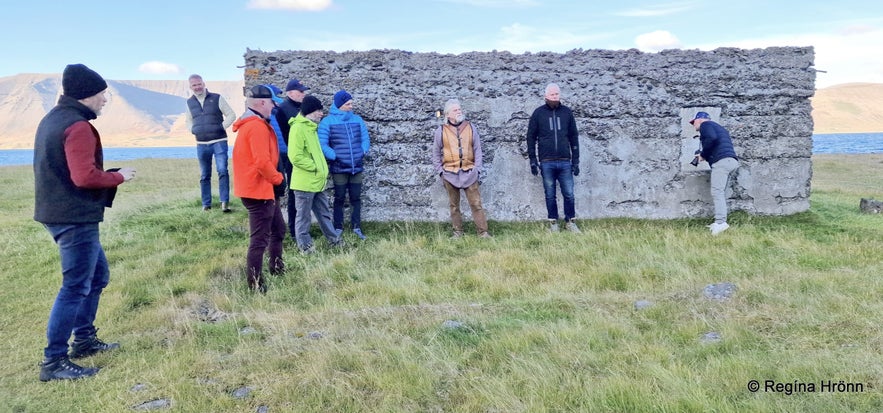 On the guided tour of Gísli Súrsson
On the guided tour of Gísli Súrsson
Elfar Logi showed us various well-known locations in the Saga of Gísli the Outlaw and told us stories. He is an actor, so he made the stories become filled with life.
In the photo above we sought shelter from the wind while Elfar Logi told us the story about Gísli competing in ball games on the frozen pond Seftjörn.
The strongest one would win the game, and people gathered around eager to find out who was the strongest of these men. Þorgrímur and Gísli fiercely played this game.
Þorgrímur all but confessed to the murder of Vésteinn during the first game as I told you earlier.
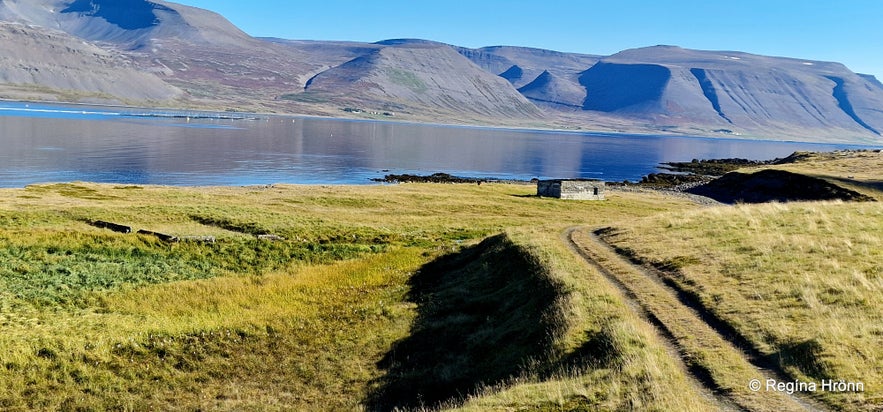 Somewhere around here the ball games were held
Somewhere around here the ball games were held
The second time this ball game is mentioned in the Saga, Þórdís, Gísli's sister, was sitting close by with the other women watching the games.
Gísli, while looking in the direction of Þorgrímur's burial mound, composed a poem in which he confessed that he was the one who killed Þorgrímur.
Þórdís listened to his poem and realized that her own brother had killed her husband while she was pregnant with their child!
She told Börkur later on when he pressed her to tell him why she had been so depressed after the games. And Börkur wanted Gísli, his brother-in-law, killed. What a predicament this was for Þórdís.
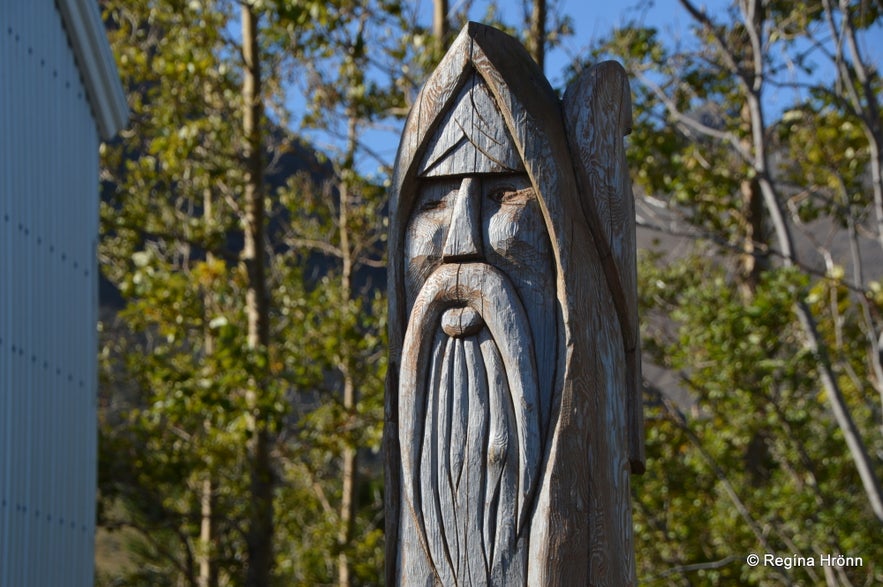 Óðinn by the Kómedíuleikhúsið theatre in Haukadalur
Óðinn by the Kómedíuleikhúsið theatre in Haukadalur
And now you know how the story unfolded and ended in Gísli's death.
At Helgafell, on hearing the news from Eyjólfur grái that Gísli was dead, Þórdís tried to kill him, but failed and wounded him instead. And she divorced Börkur digri.
After the one-hour guided tour, we went inside the Kómedíuleikhúsið theatre to get something hot to drink. It was lovely being inside a warm theatre.
Thank you, dear Elfar Logi, for inviting me on this tour. Little did you know that I had been wanting to join your tour for years :)
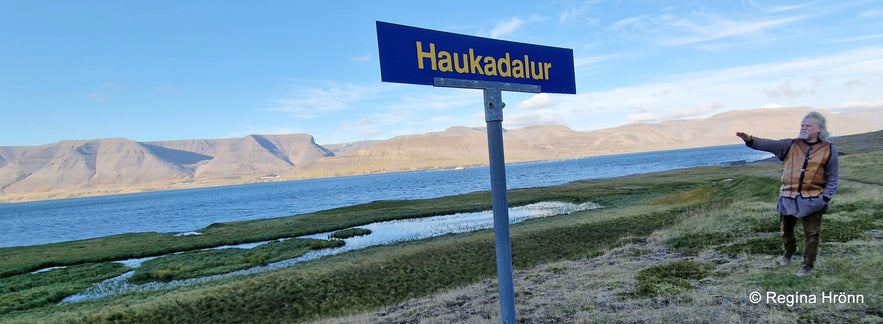 Elfar Logi in Haukadalur - the sun was setting behind the mountains
Elfar Logi in Haukadalur - the sun was setting behind the mountains
If you want to join a guided Saga tour of the home turf of Gísli Súrsson with the Haukadalsgoði Viking Chieftain, you can book here, the price is only ISK 3.500 (2024) and the tour lasts about an hour.
As I told you earlier then my grandmother, Kristbjörg, was born on the other side of the Dýrafjörður fjord, at Sæból farm in Ingjaldssandur in Önundarfjörður.
And her grandmother, Sigríður, was born here in Dýrafjörður.
Due to these family ties, I feel very much at home when visiting this area in the Westfjords :)
 Beautiful Dýrafjörður by Haukadalur
Beautiful Dýrafjörður by Haukadalur
I hope you liked my summary of the Saga of Gísli the Outlaw and that it enriches your visit to the Westfjords. Do stop by the Saga signs to see the locations of important events in the Saga of Gísli.
Have a lovely time in the beautiful Westfjords :)
Ref.
Gísla saga Súrssonar (Icelandic version)
The Saga of Gísli the Outlaw (English version)
Íslenzk Fornrit - Vestfirðinga sögur - Hið ízlenska fornritafélag
Íslendingasögur I - 1985
Gísla saga (Menntamálastofnun)
Gísla saga Súrssonar (Námsgagnastofnun)
